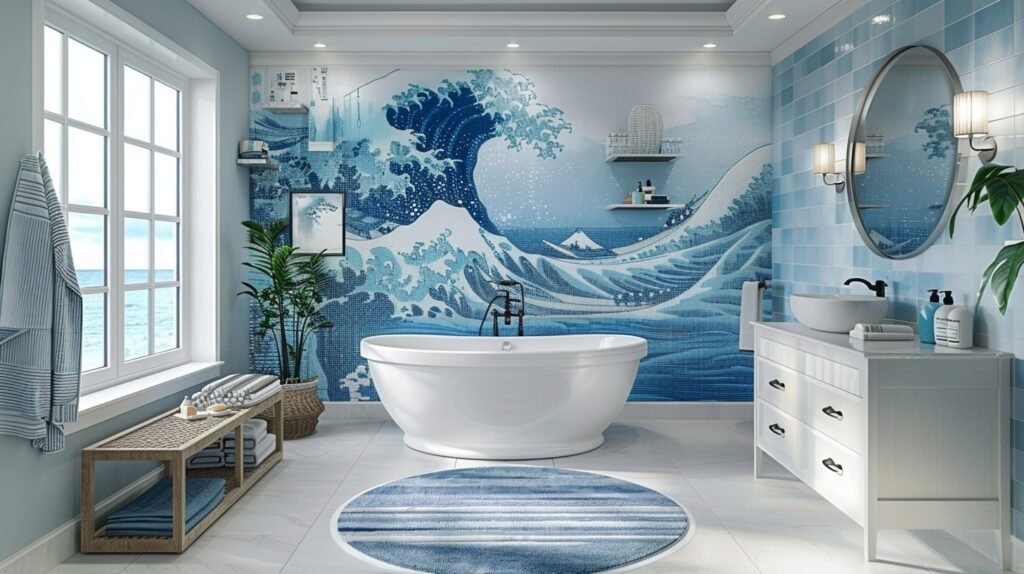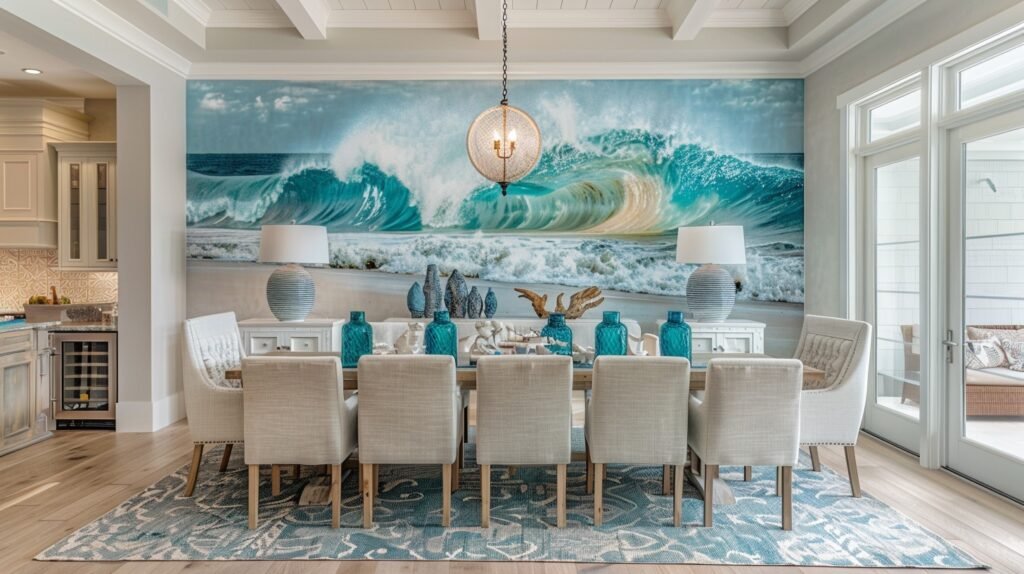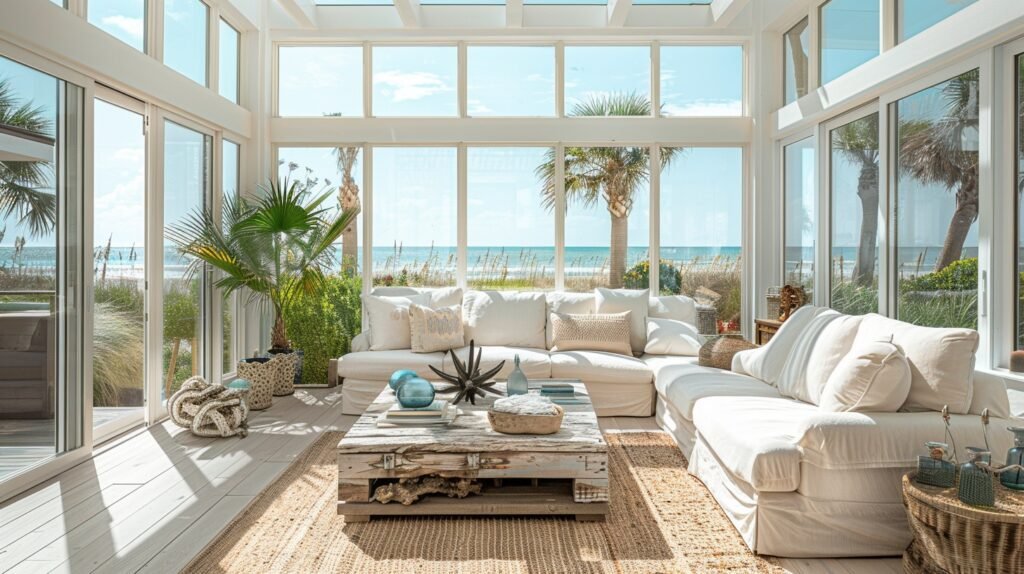Wabi Sabi is a Japanese aesthetic philosophy that celebrates the beauty of imperfection, impermanence, and simplicity. In garden design, this approach transforms outdoor spaces into serene, naturalistic sanctuaries that embrace the raw, authentic essence of nature. The following 29 Wabi Sabi garden styles offer unique perspectives on creating tranquil, organic landscapes that honor the subtle beauty of growth, decay, and the passage of time.
1. Rustic Serenity
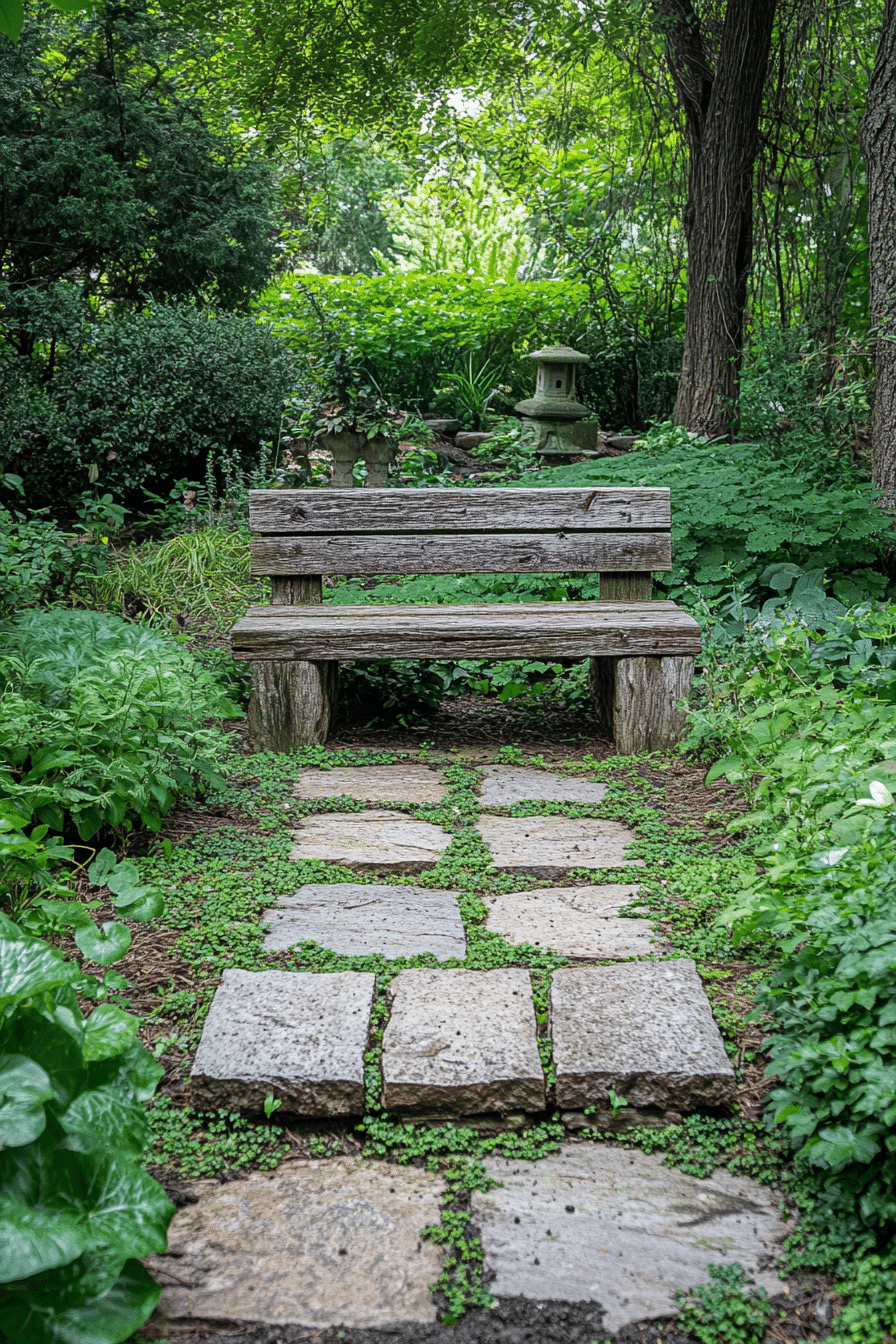
Rustic Serenity in a Wabi Sabi garden embraces the untouched beauty of nature. Weathered stone paths and untamed wildflowers create a peaceful, organic atmosphere. Aged wooden benches and pots seamlessly blend into the garden’s surroundings, highlighting imperfection and transience. This design fosters a tranquil space that feels both timeless and calming.
2. Moss Magic
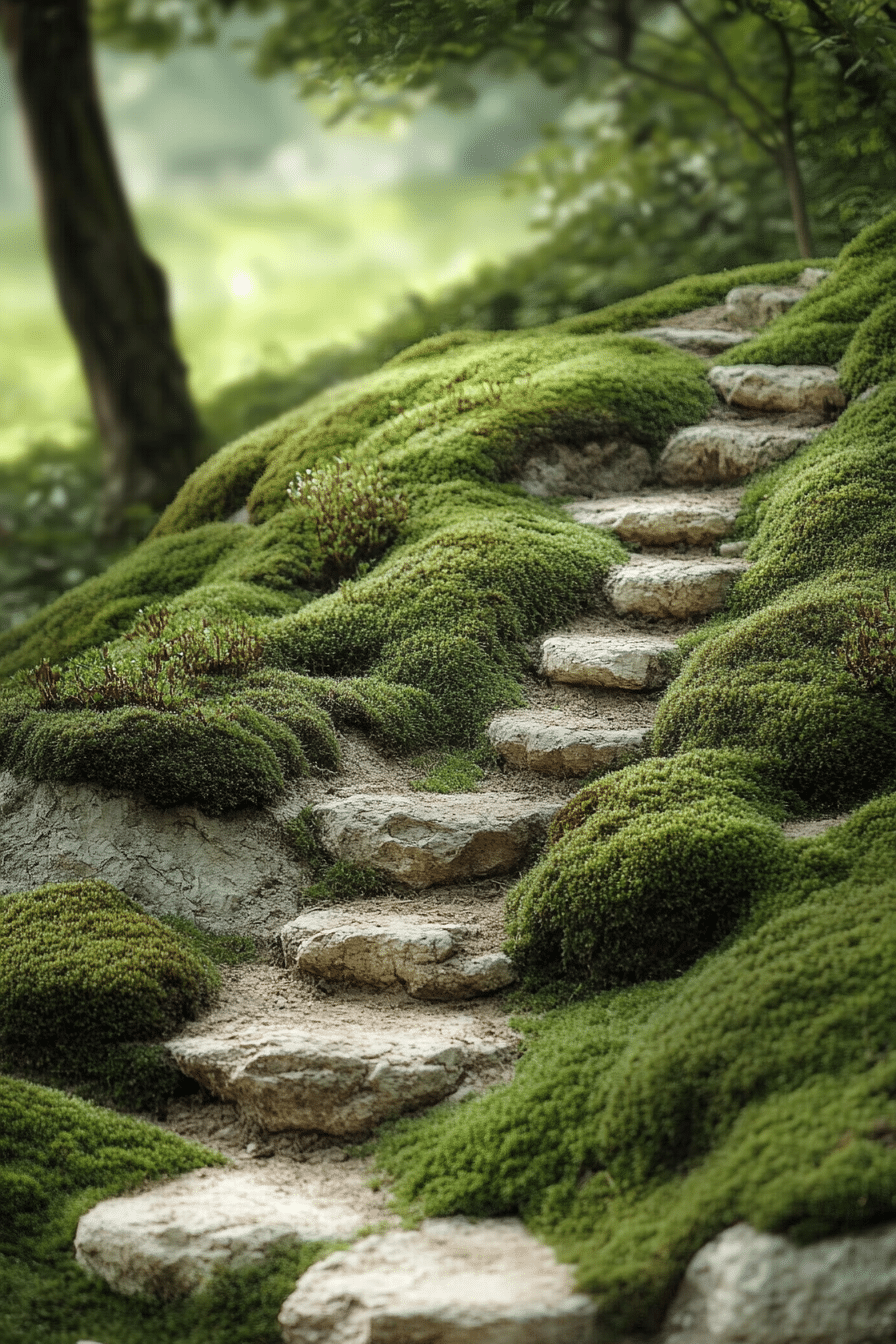
Moss Magic in a Wabi Sabi garden focuses on the lush, velvety appearance of moss. This soft greenery thrives in shaded areas, adding an ancient, serene charm. Stone elements and minimal intervention allow the moss to take center stage, creating a harmonious connection to nature. This garden is perfect for showcasing the beauty of growth and decay.
3. Harmonious Imperfection
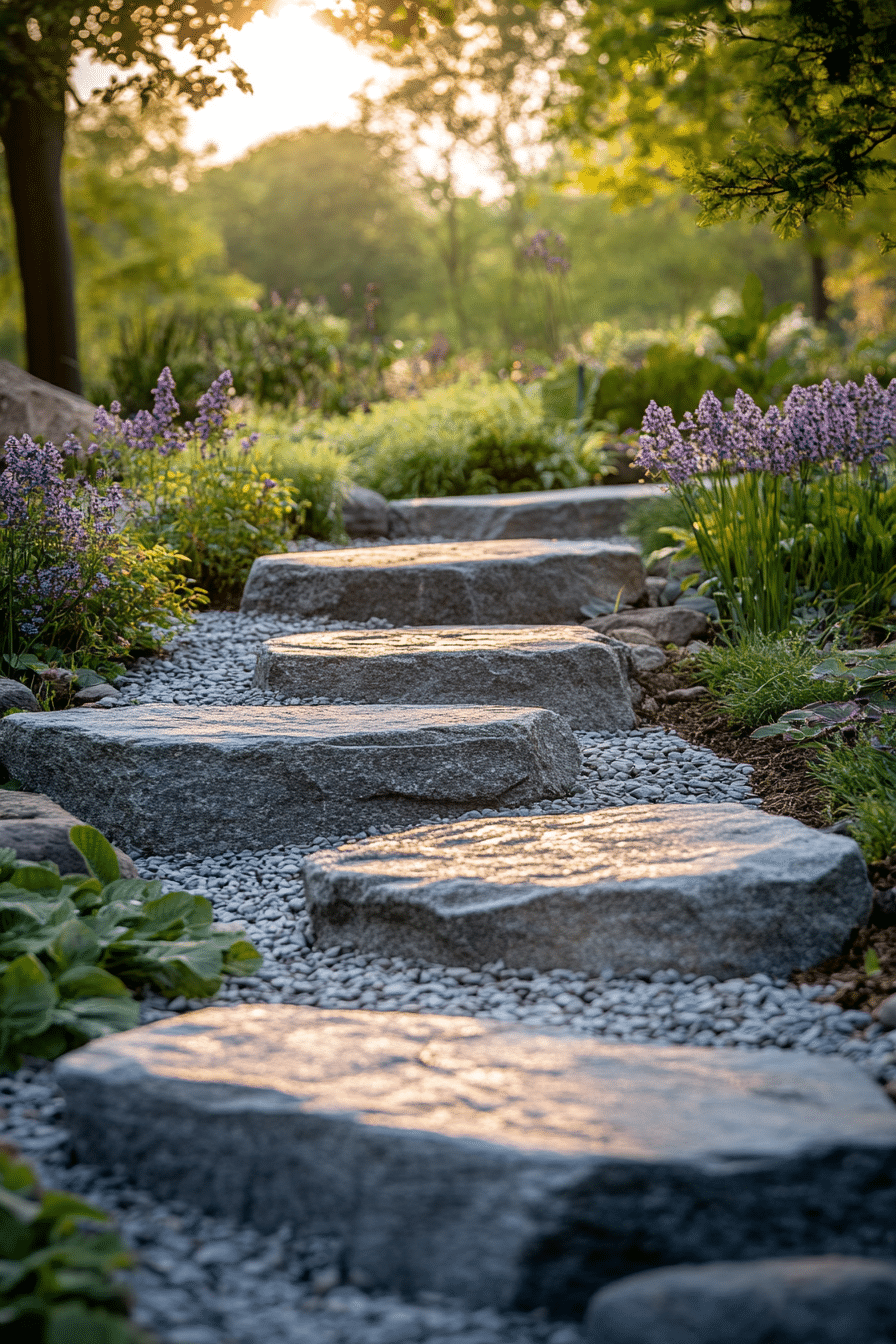
Harmonious Imperfection in a Wabi Sabi garden celebrates the beauty of asymmetry and irregularity. Uneven pathways, mismatched stones, and wild plants come together to form a natural balance. This style reflects the Wabi Sabi principle of finding beauty in unconventional designs. Each element is chosen for its ability to complement the landscape authentically.
4. Whimsical Nature
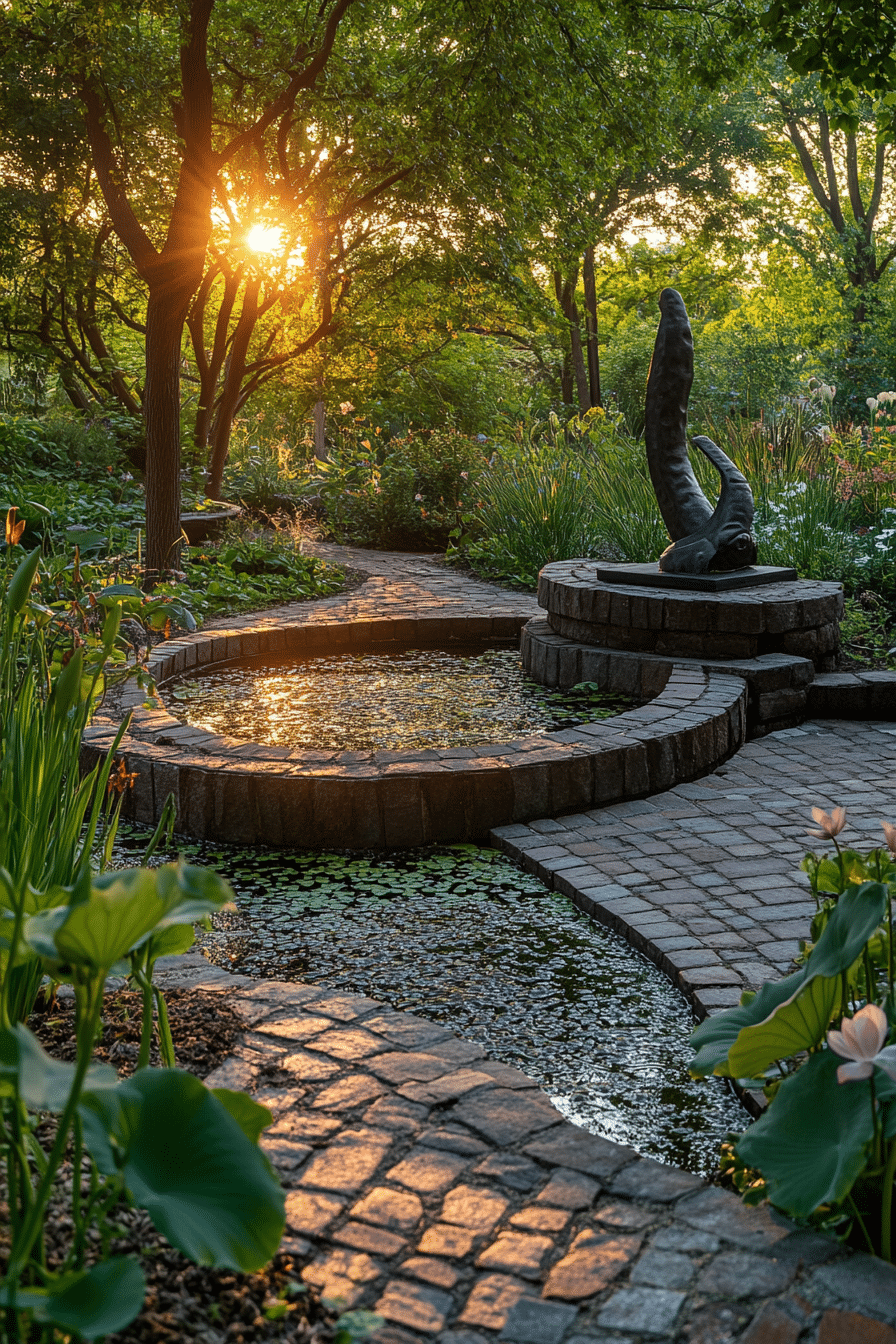
Whimsical Nature in a Wabi Sabi garden brings playful, light-hearted elements to the space. Winding ivy, natural sculptures, and flowing water features create an atmosphere of surprise and joy. The spontaneous design invites appreciation for nature’s unpredictability, true to Wabi Sabi principles. This garden design encourages a sense of wonder and delight.
5. Earthen Essence
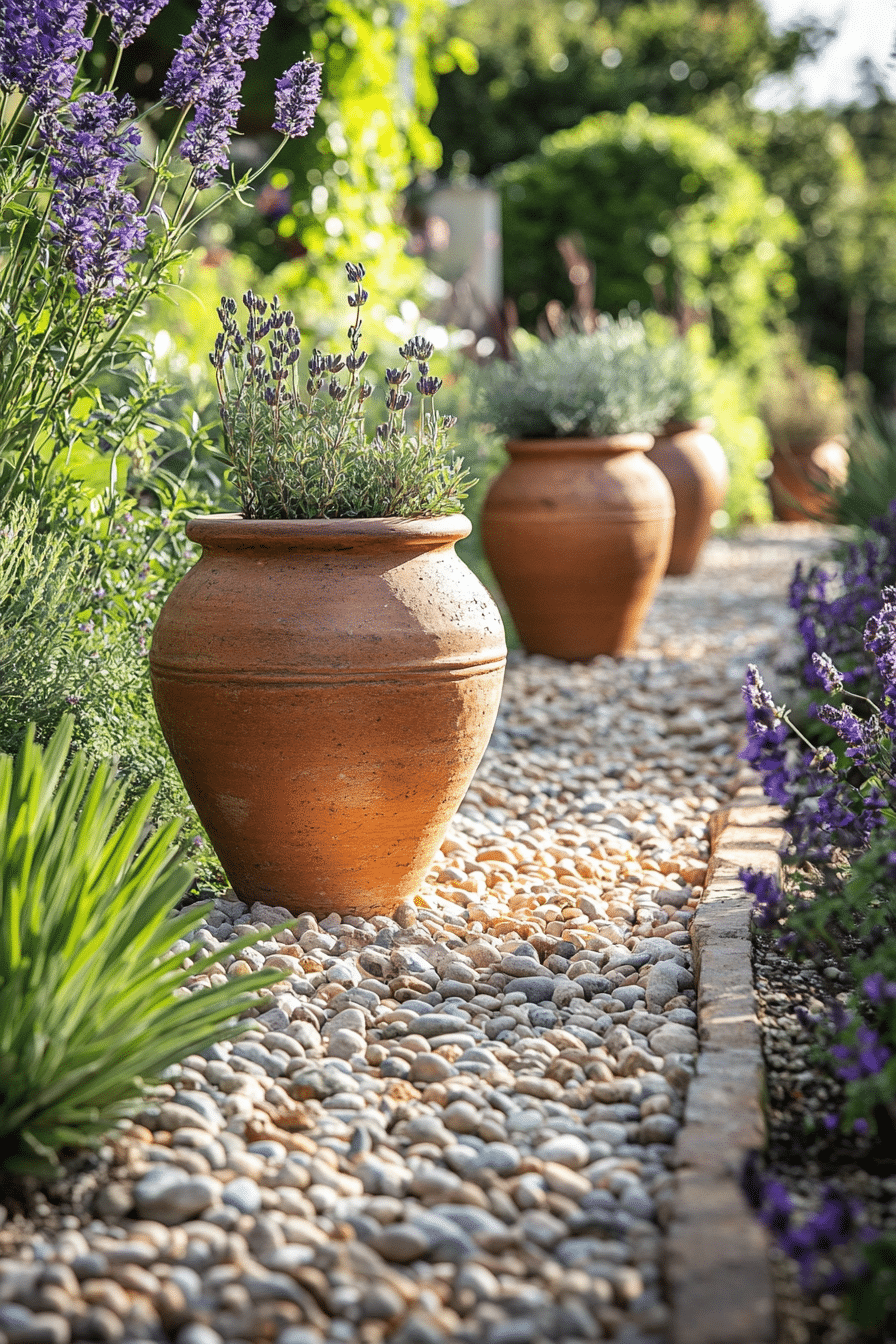
Earthen Essence in a Wabi Sabi garden emphasizes natural colors and textures for a grounded, serene aesthetic. Clay pots, terracotta statues, and gravel pathways highlight the raw beauty of organic materials. Simple layouts and easy-to-grow plants reflect the effortless elegance of Wabi Sabi. This garden exudes tranquility and harmony with the earth.
6. Aged Woodlands
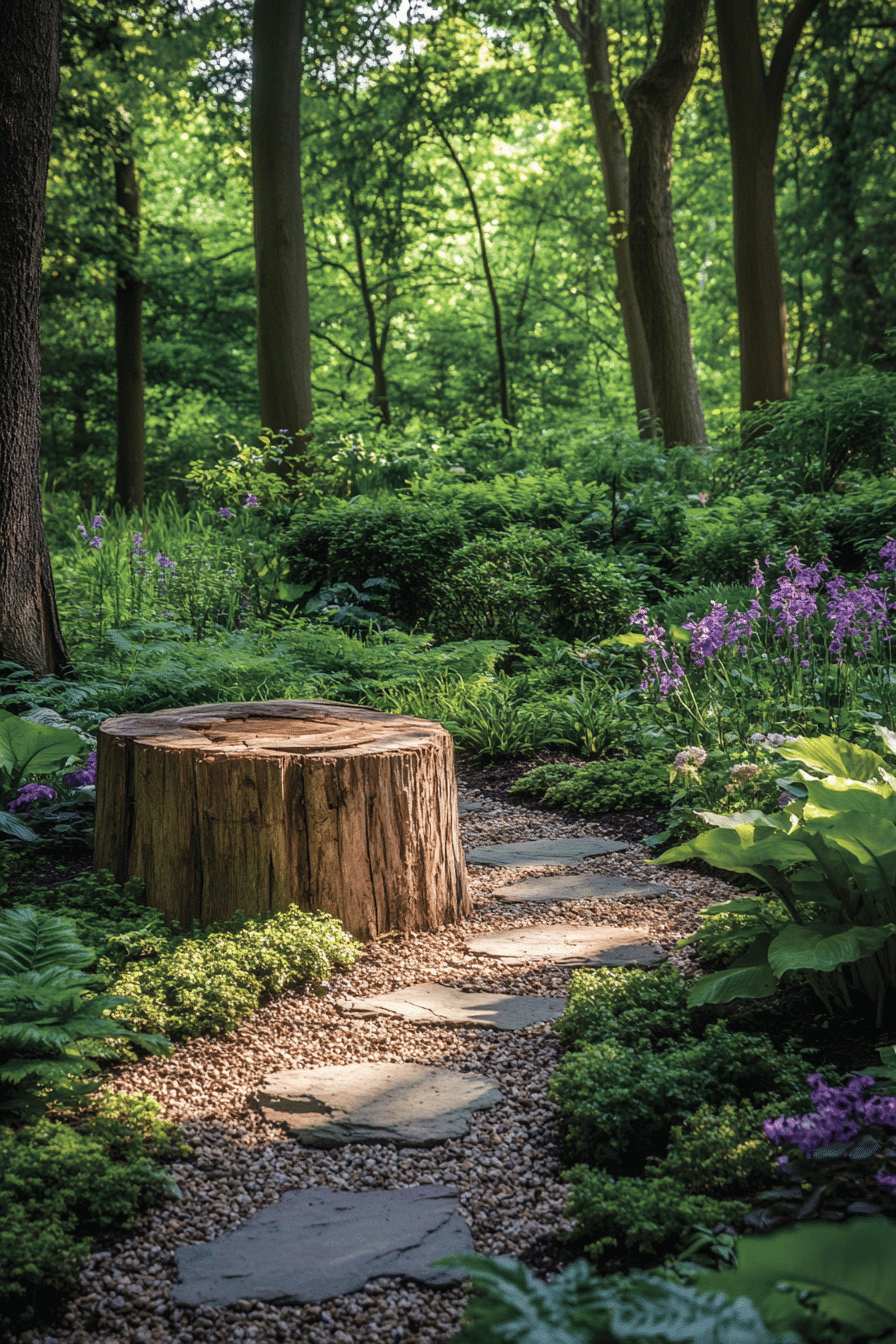
Aged Woodlands in a Wabi Sabi garden mimic the feel of a mature forest. Fallen logs, shaded clearings, and native plants create a biodiverse sanctuary. The use of weathered wood adds depth and a sense of history to the space. This design perfectly aligns with the Wabi Sabi appreciation for nature’s processes.
7. Flowing Asymmetry
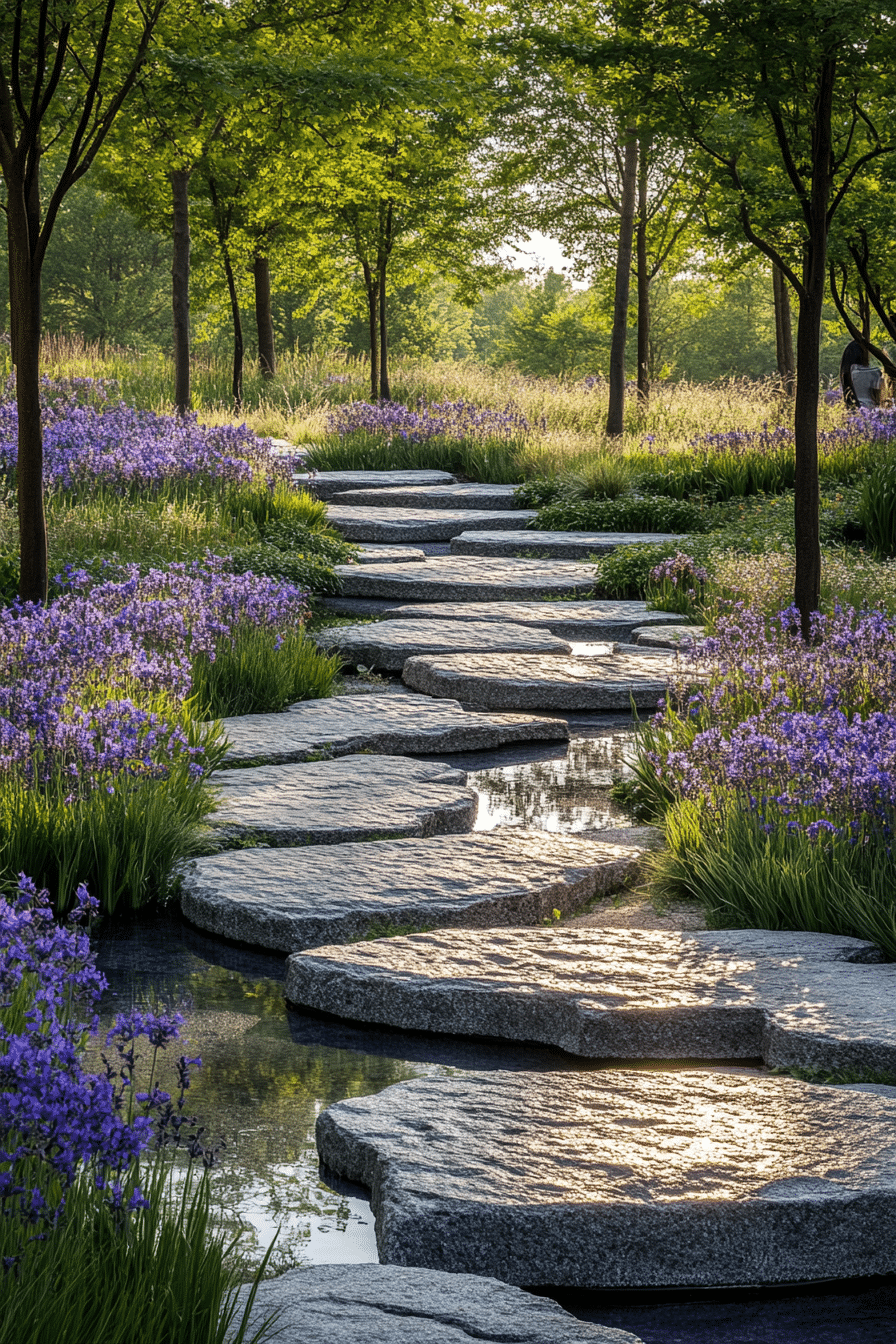
Flowing Asymmetry in a Wabi Sabi garden features irregular shapes and organic layouts. Curving paths, freely growing plants, and natural water elements evoke a sense of gentle movement. This design avoids rigid symmetry, embracing the unpredictable beauty of nature. It’s a peaceful and visually engaging garden style.
8. Layered Textures
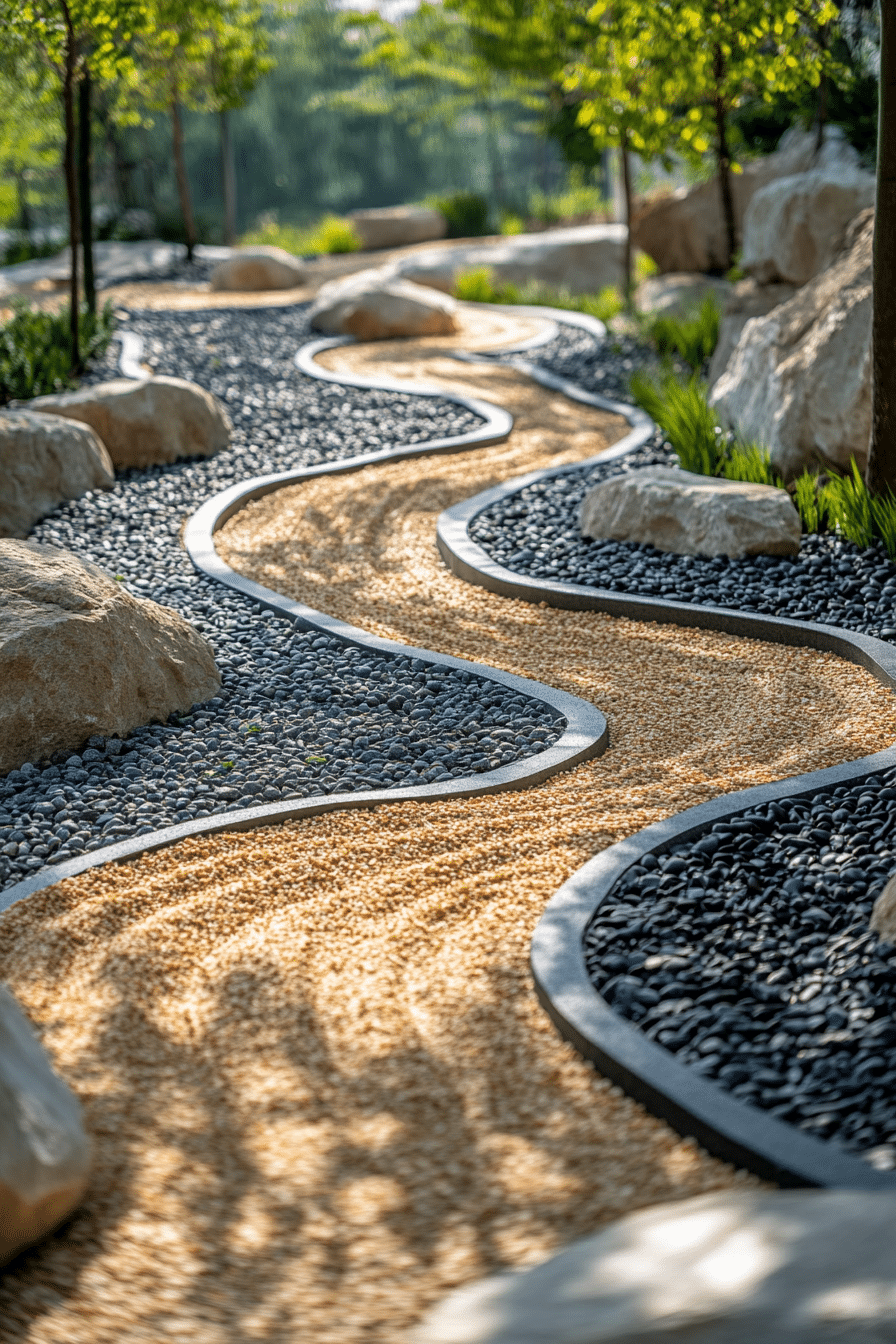
Layered Textures in a Wabi Sabi garden focus on creating depth through diverse materials and plants. Coarse sand, smooth pebbles, and varied foliage invite tactile engagement. Every layer contributes to the garden’s overall richness, encouraging visitors to pause and observe. This design exemplifies Wabi Sabi’s appreciation for detail and complexity.
9. Stone Sanctum
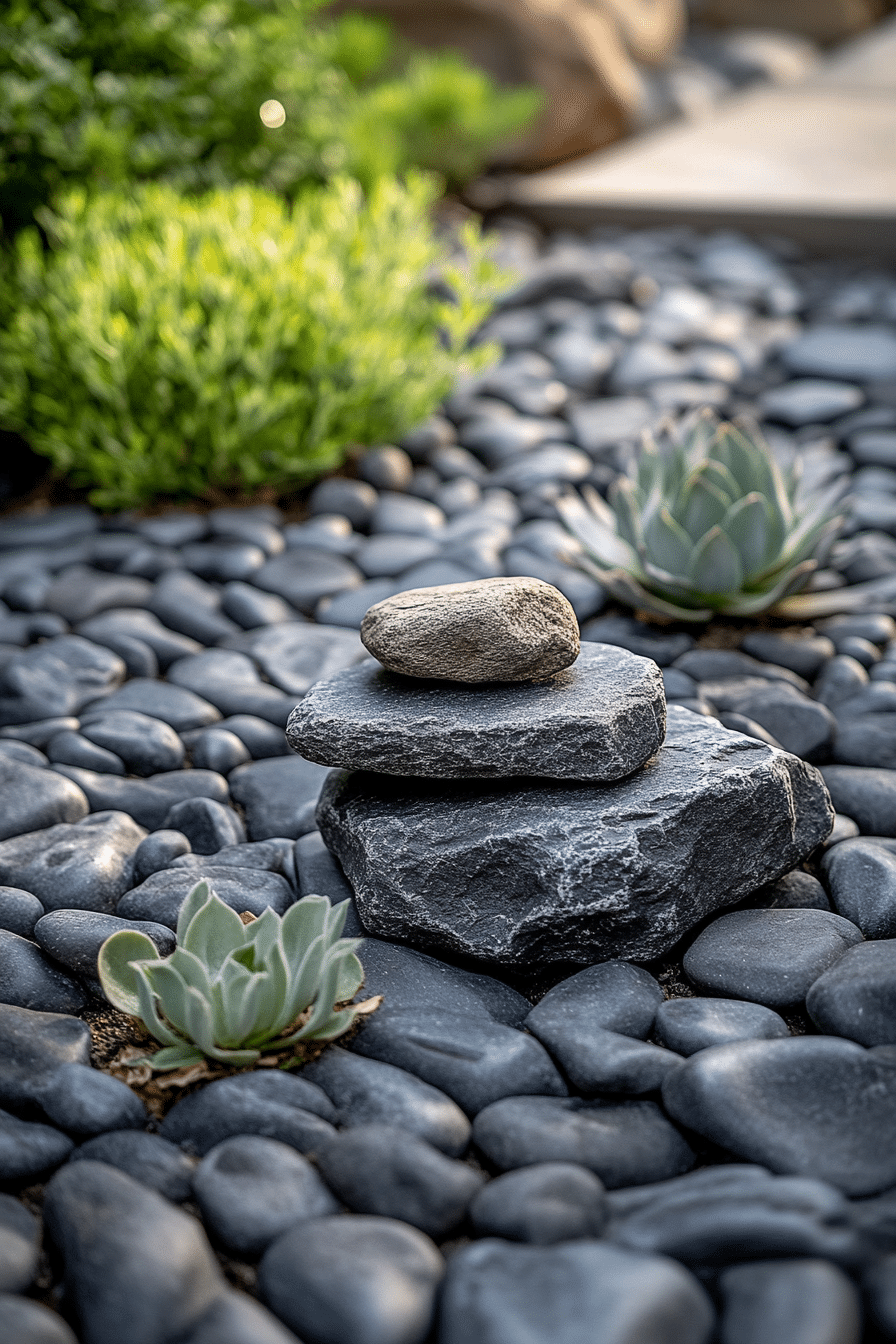
Stone Sanctum in a Wabi Sabi garden uses natural stone elements to foster a meditative atmosphere. Large rocks serve as focal points, while smaller stones define pathways and borders. The stone arrangements flow naturally with the landscape, promoting peace and contemplation. This design embodies the quiet strength of Wabi Sabi.
10. Wild Haven
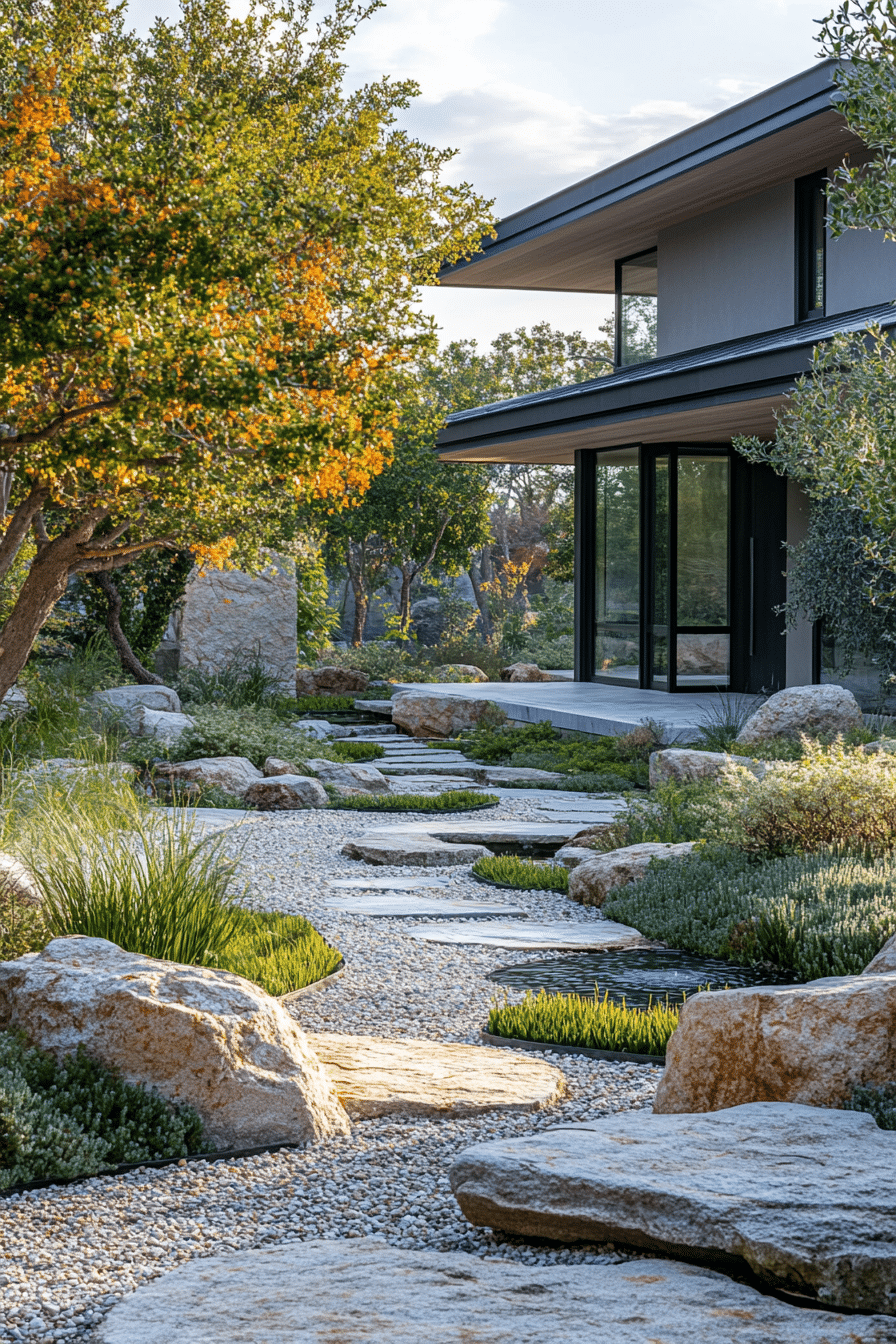
Wild Haven in a Wabi Sabi garden allows nature to grow freely, celebrating untamed beauty. Native plants and wildflowers thrive without heavy maintenance, creating a dynamic landscape. This design emphasizes the natural cycle of life, perfectly aligned with Wabi Sabi values. Wild Haven gardens are a tribute to nature’s resilience and spontaneity.
11. Serene Pockets
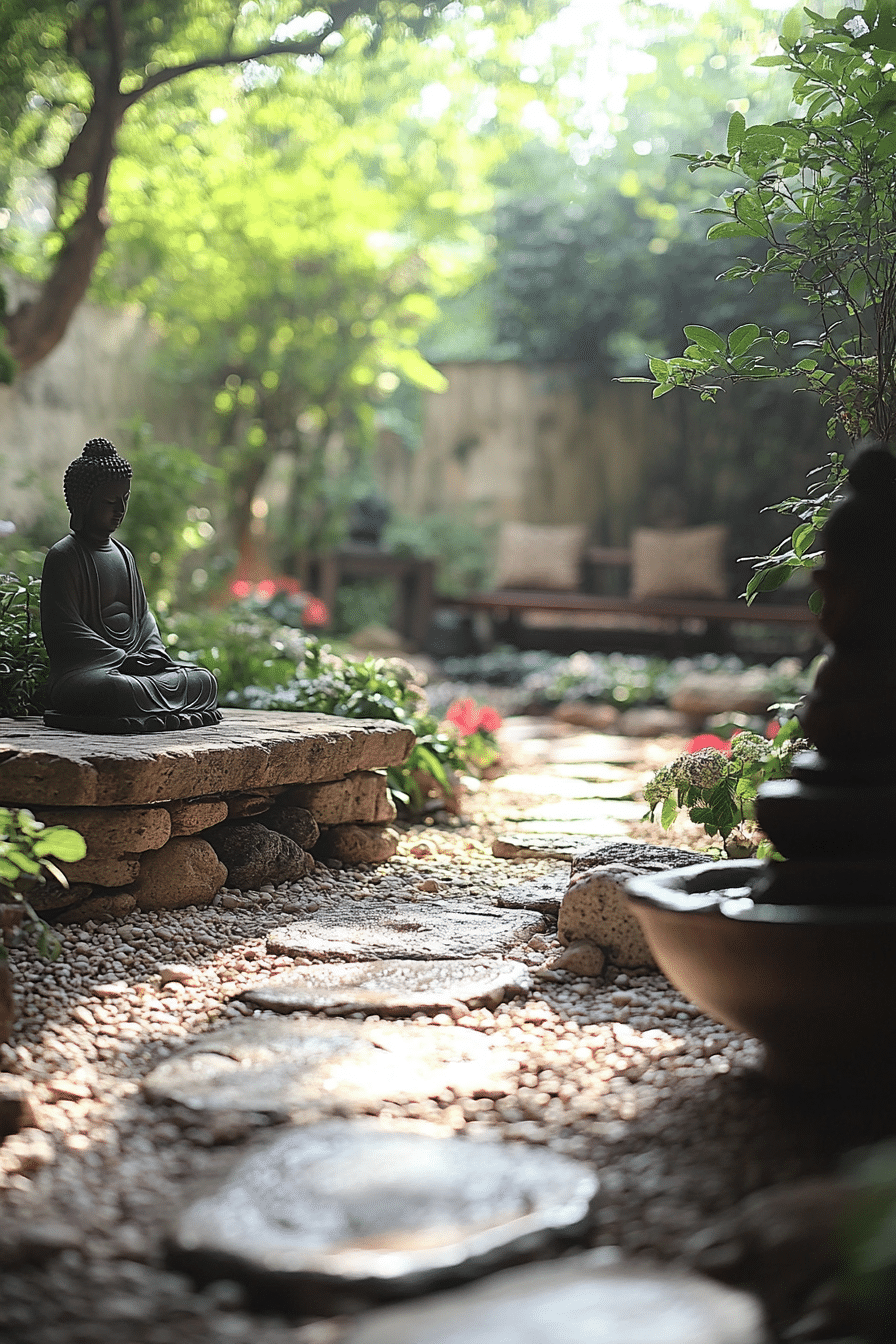
Serene Pockets in a Wabi Sabi garden create small spaces for solitude and reflection. Soft moss, a single bench, or a striking tree can turn these patches into tranquil retreats. The design focuses on appreciating the small, often overlooked elements of the garden. These pockets provide a perfect escape for mindfulness and peace.
12. Gentle Curves
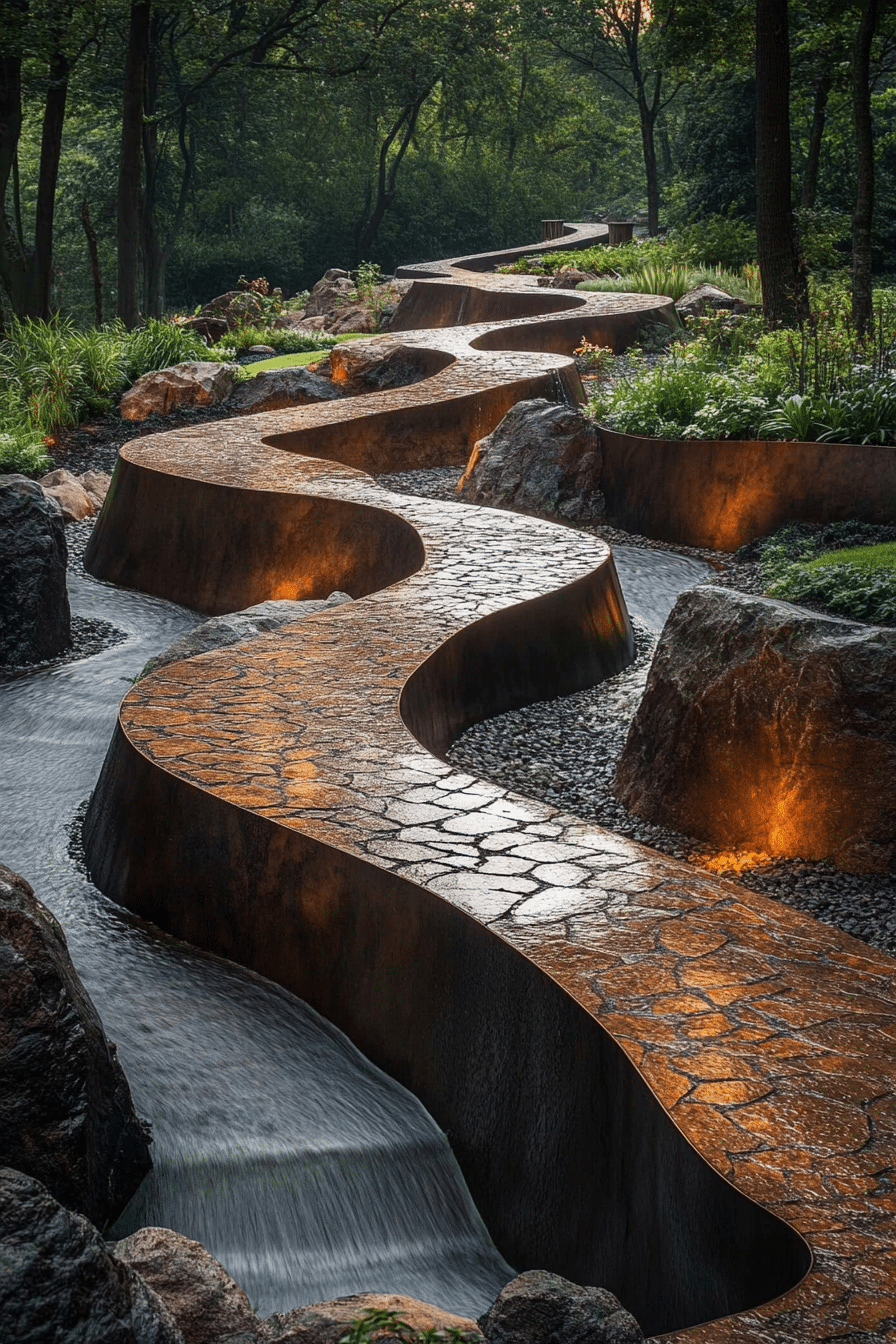
Gentle Curves in a Wabi Sabi garden feature flowing pathways and borders that mimic natural patterns. These undulating shapes create a seamless connection with the surrounding environment. Plants are arranged in soft, harmonious groupings, enhancing the garden’s organic feel. This design offers a serene journey through nature.
13. Pebbled Zen Paths
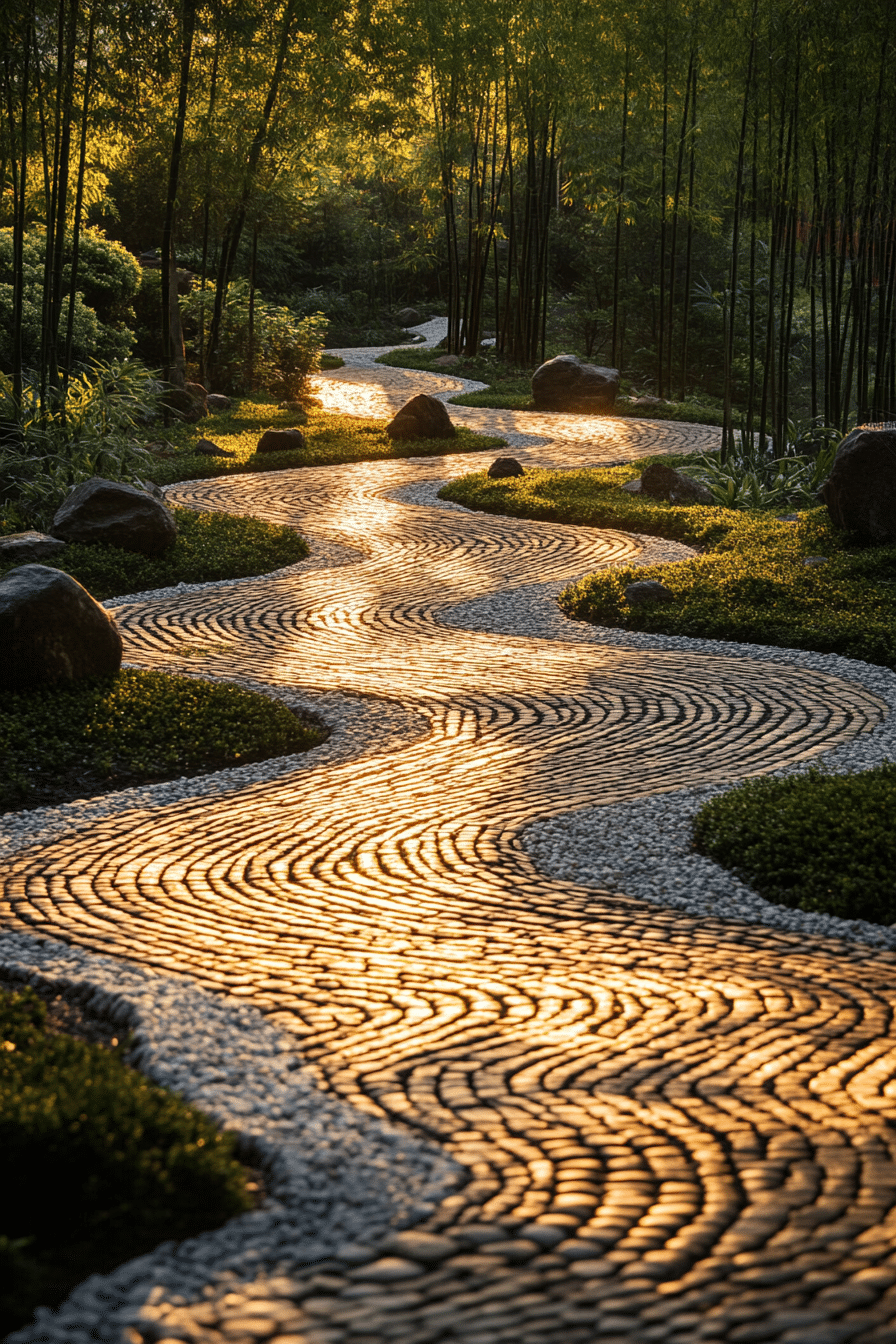
Pebbled Zen Paths in a Wabi Sabi garden combine tactile and visual tranquility. Smooth, rounded pebbles line pathways, inviting meditative walks through serene spaces. These paths guide visitors past water features or quiet sitting areas, encouraging mindfulness. They are a perfect blend of Zen and Wabi Sabi principles.
14. Untamed Beauty
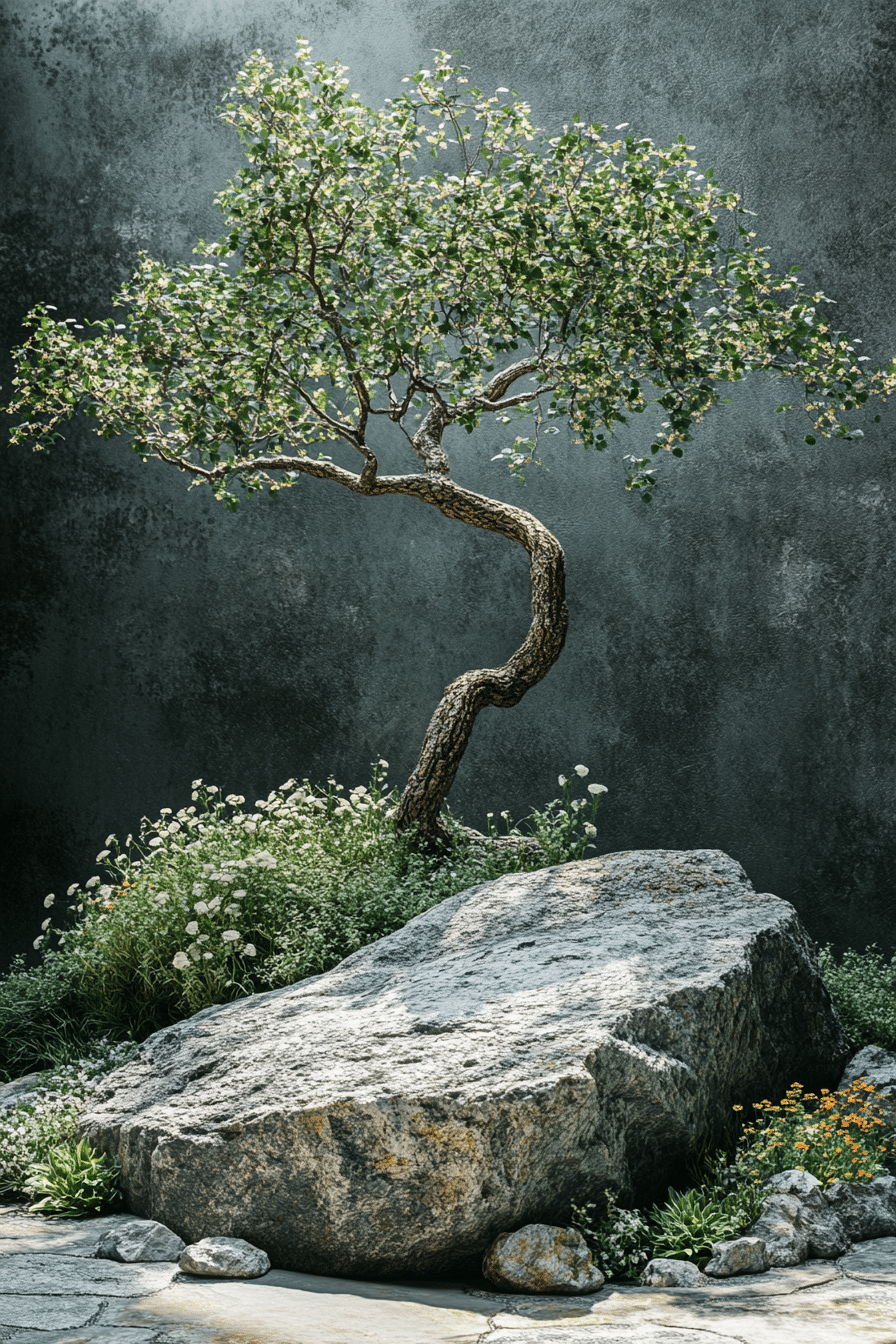
Untamed Beauty in a Wabi Sabi garden highlights unrefined elements like rugged rocks, untreated wood, and wild plants. This design celebrates the raw, authentic charm of nature. The garden invites visitors to embrace imperfection and simplicity. It’s an ideal retreat for those who love nature in its most genuine form.
15. Flowing Serenity
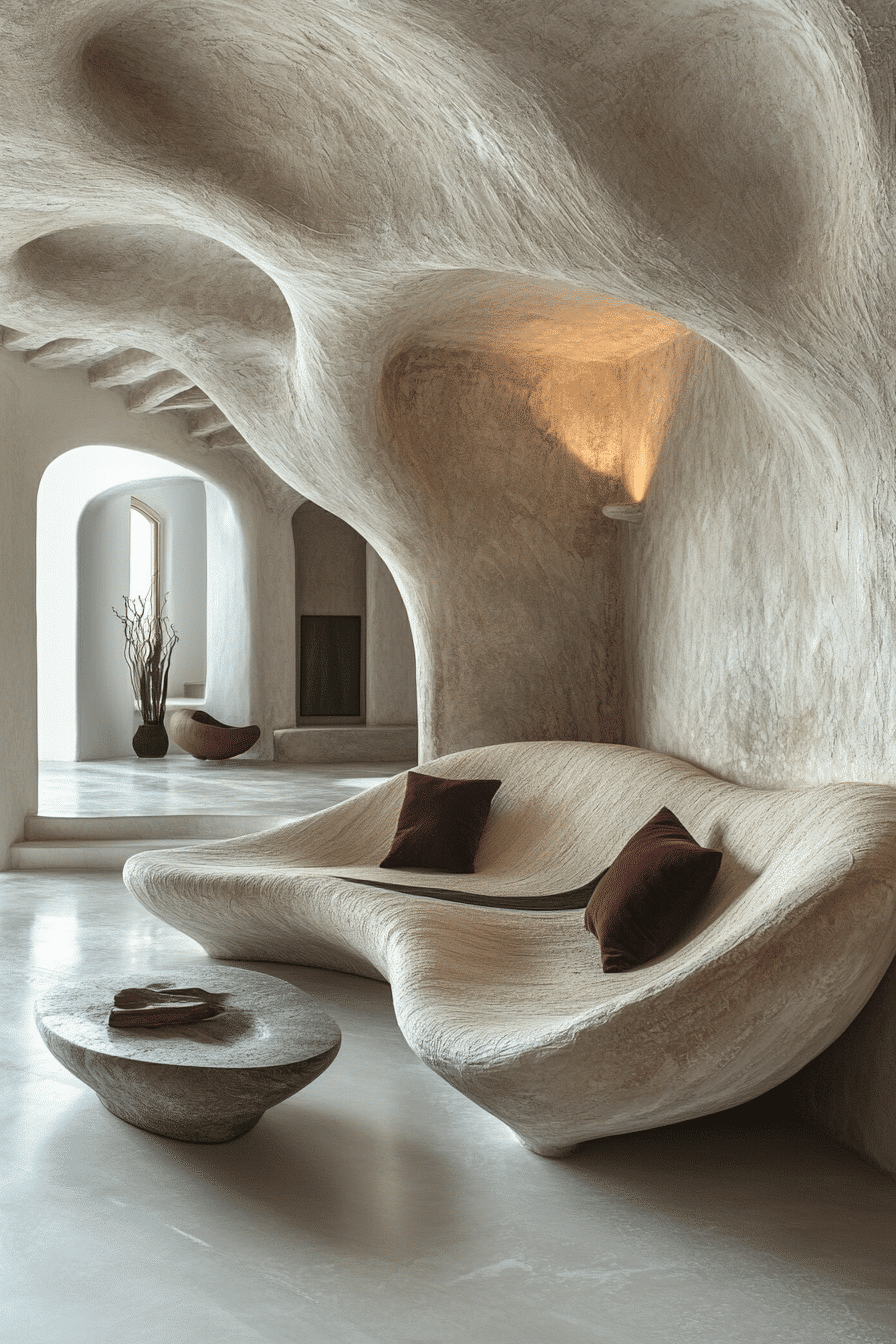
Flowing Serenity in a Wabi Sabi garden emphasizes soft, fluid shapes. Rounded stones, curved pathways, and gentle water features create a sense of ease and harmony. Plants with drooping foliage complement the fluid design, enhancing its tranquil appeal. This garden is a soothing, peaceful retreat.
16. Aged Patios
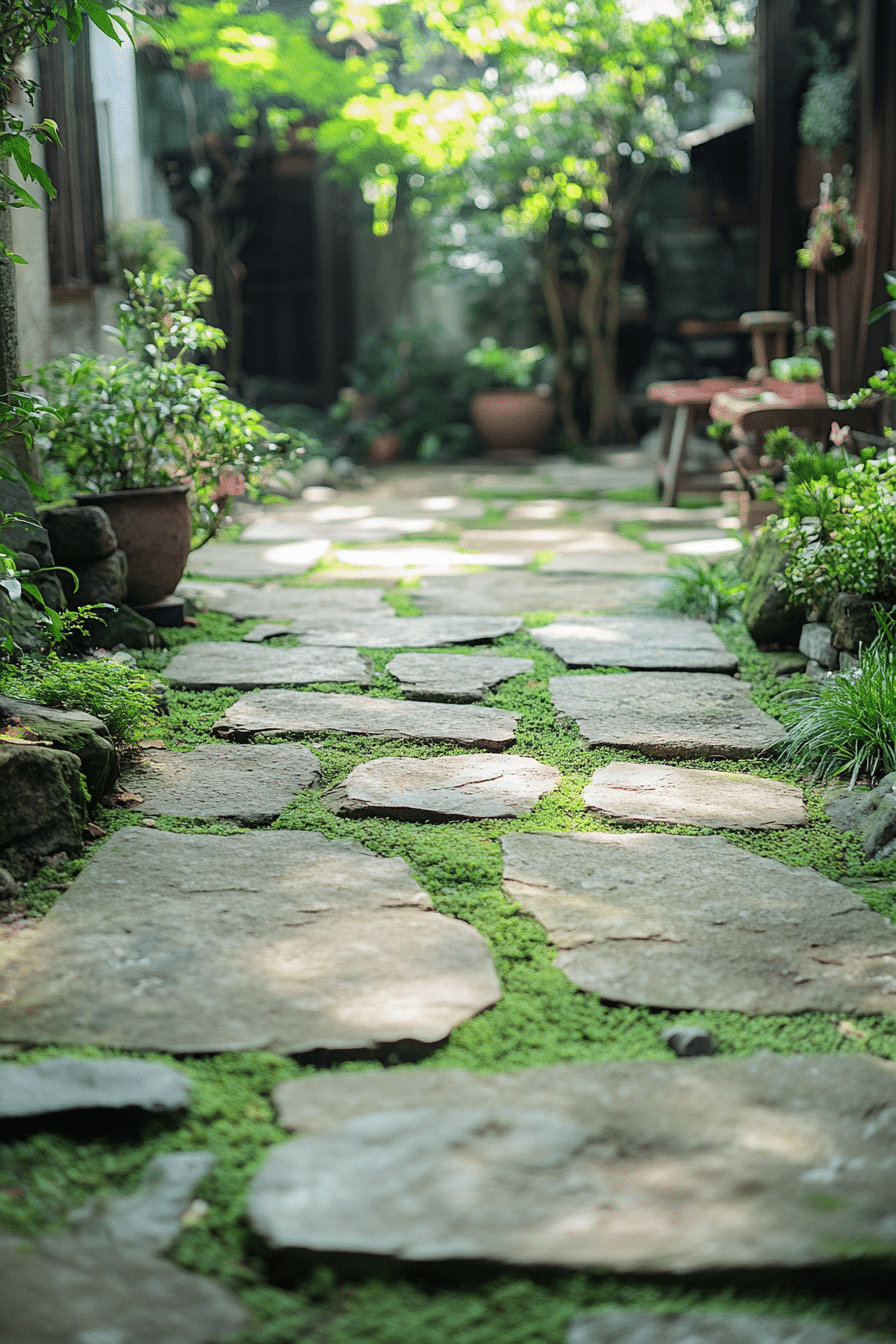
Aged Patios in a Wabi Sabi garden feature weathered stone and brick that improve with time. Moss-covered surfaces and natural patinas tell a story of endurance and history. These patios serve as charming foundations for seating or potted plants, blending seamlessly with the surrounding garden. This design embraces the beauty of aging and transformation.
17. Natural Perfection
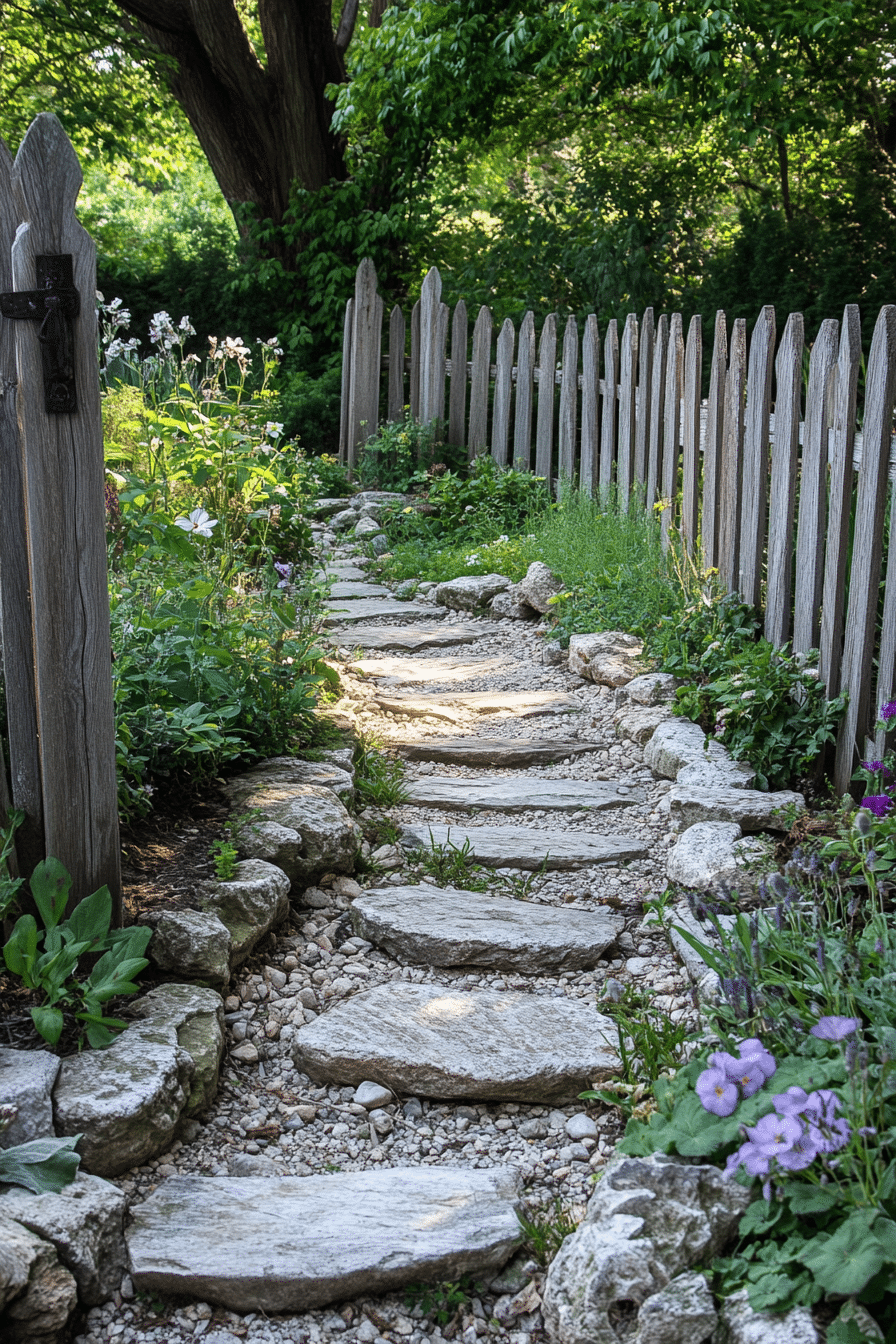
Natural Perfection in a Wabi Sabi garden highlights the beauty of rough, untouched textures. Uncut stones, rugged bark, and untrimmed plants create a raw and organic aesthetic. This garden celebrates the incomplete and imperfect, reflecting Wabi Sabi’s core values. It’s a space that feels authentic and deeply connected to nature.
18. Nature’s Sculpture
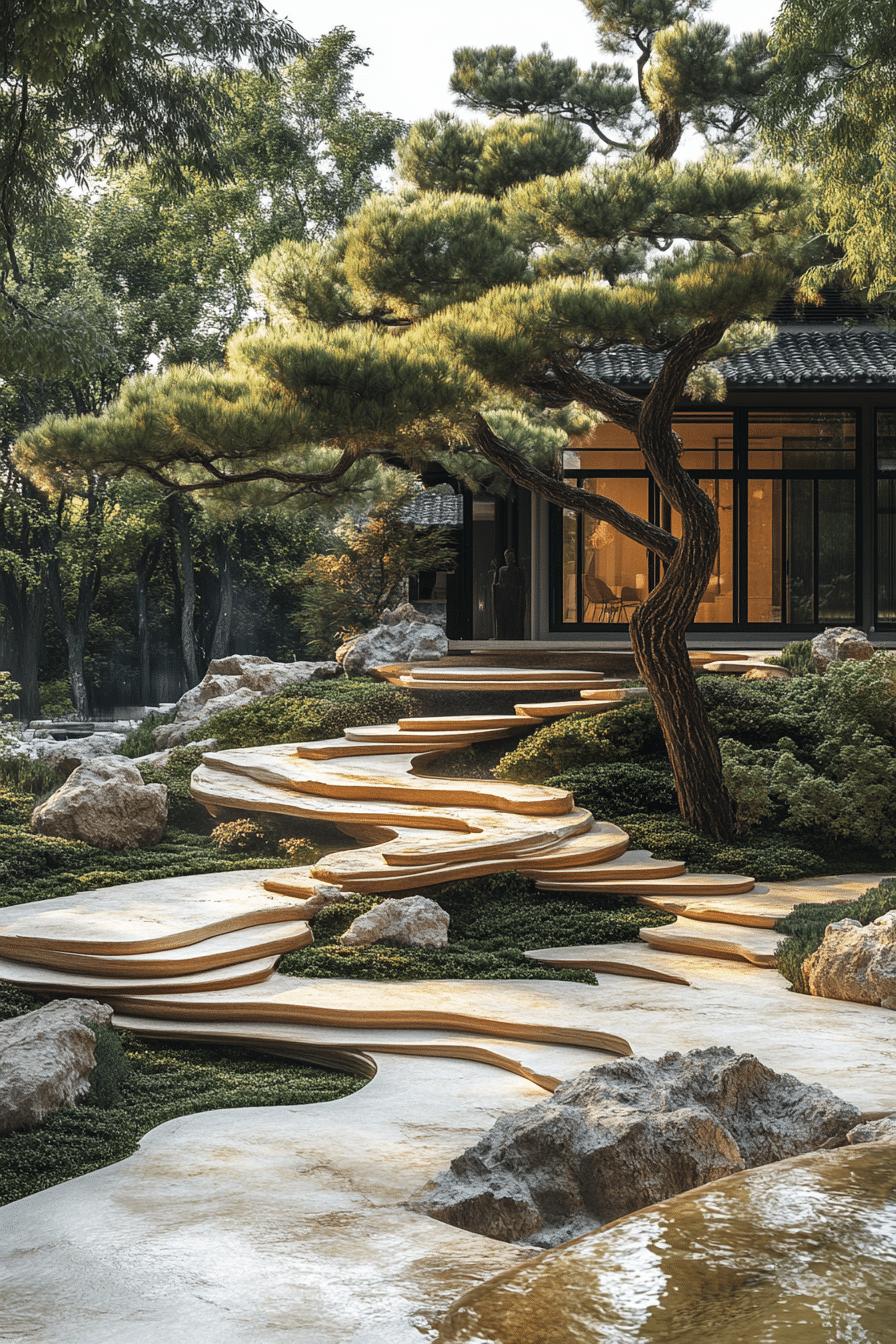
Nature’s Sculpture in a Wabi Sabi garden highlights elements shaped by the forces of nature. Wind-swept trees, water-carved stones, and organically eroded features are showcased as focal points. Subtle human intervention enhances, rather than alters, these natural forms. This garden is a tribute to nature’s artistry and its dynamic processes.
19. Whispering Grass
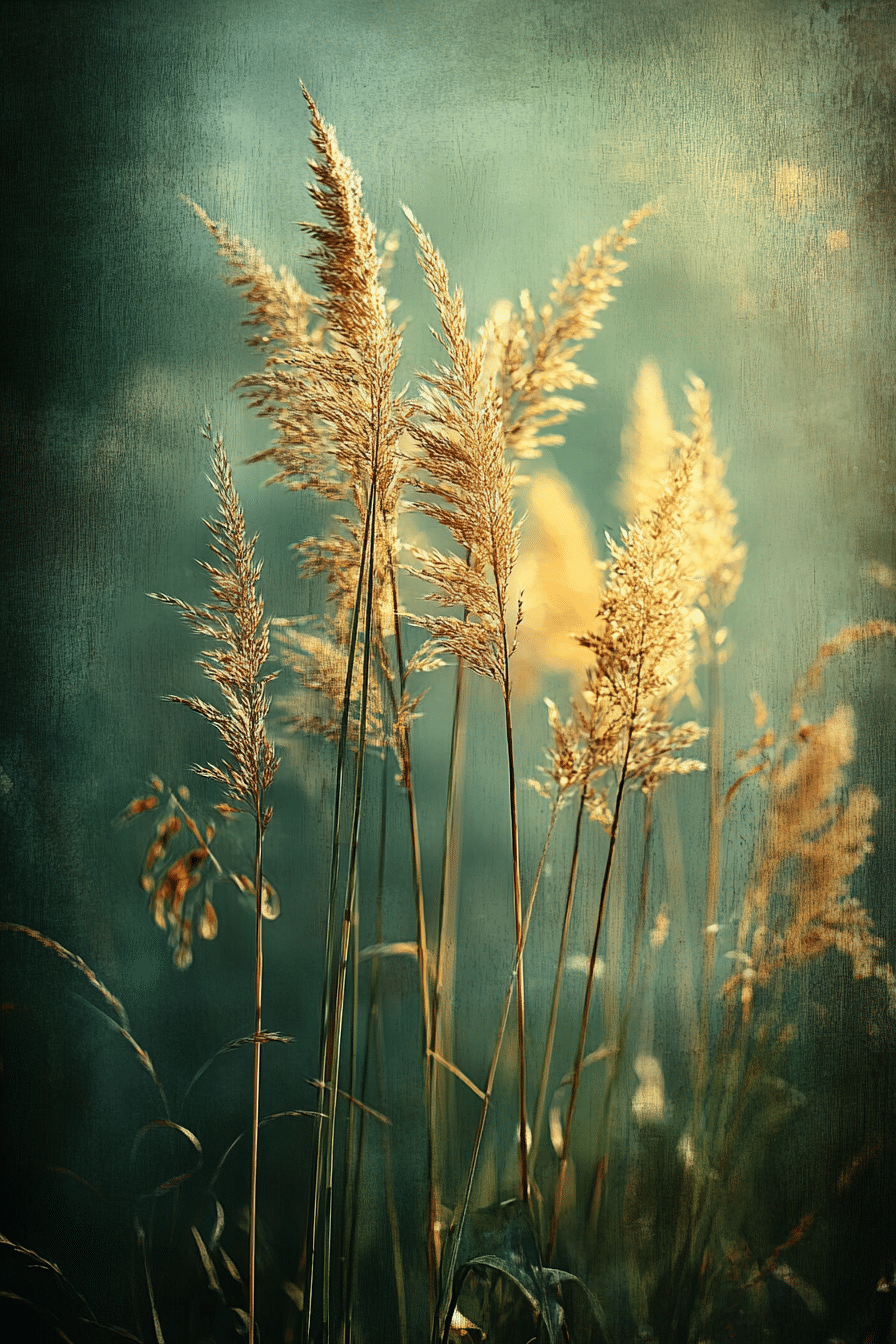
Whispering Grass in a Wabi Sabi garden focuses on the elegance of ornamental and native grasses. These plants sway gently in the wind, adding movement and sound to the garden. The rustling of grass enhances the sensory experience, creating a peaceful and dynamic atmosphere. This design captures the beauty of simplicity and natural rhythms.
20. Shades of Green
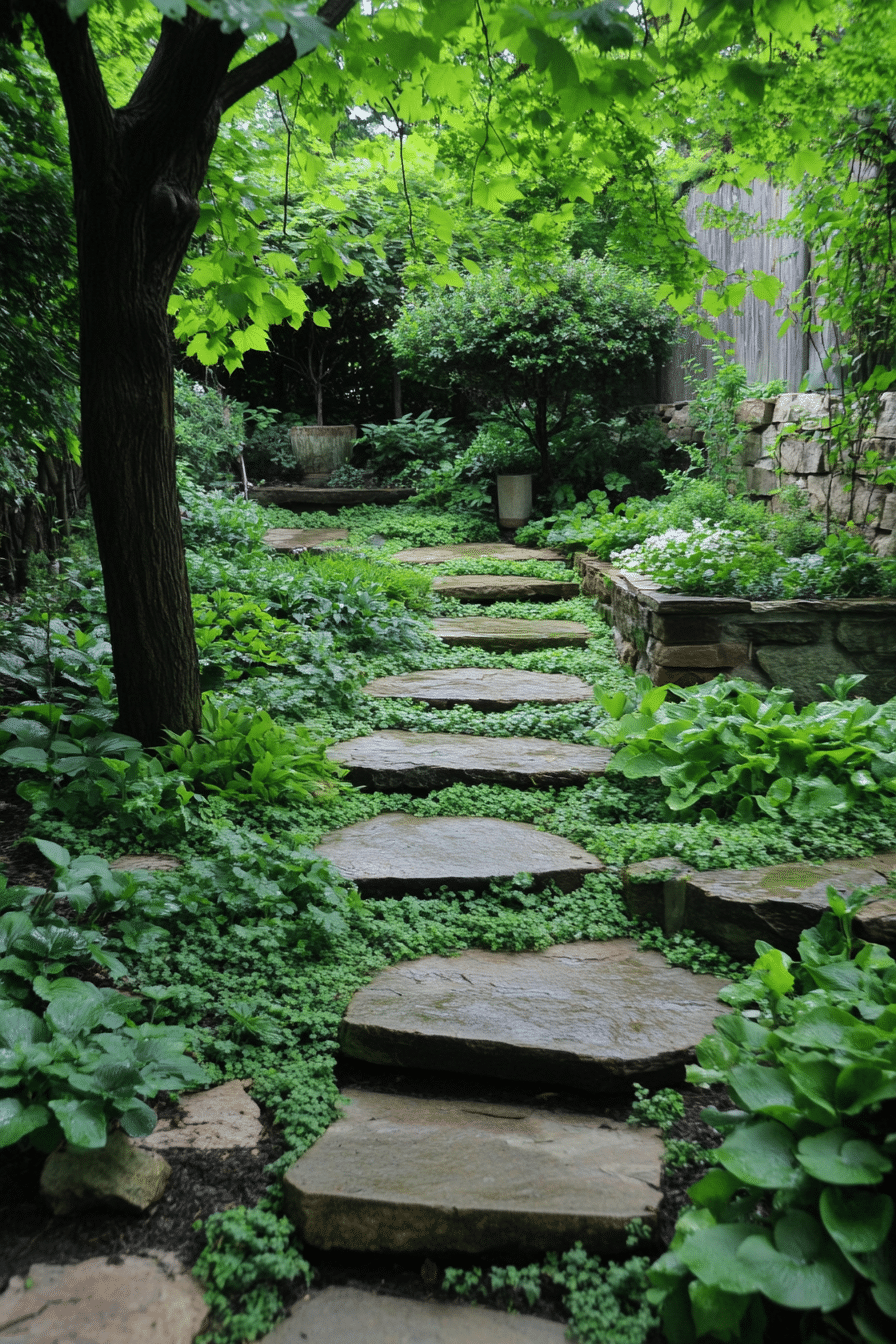
Shades of Green in a Wabi Sabi garden celebrate the calming effect of monochromatic foliage. Different textures, shapes, and tones of green create depth and harmony. This design fosters a serene, cohesive space that feels deeply connected to the earth. It’s perfect for those seeking a minimalist yet rich garden aesthetic.
21. Tangled Abundance
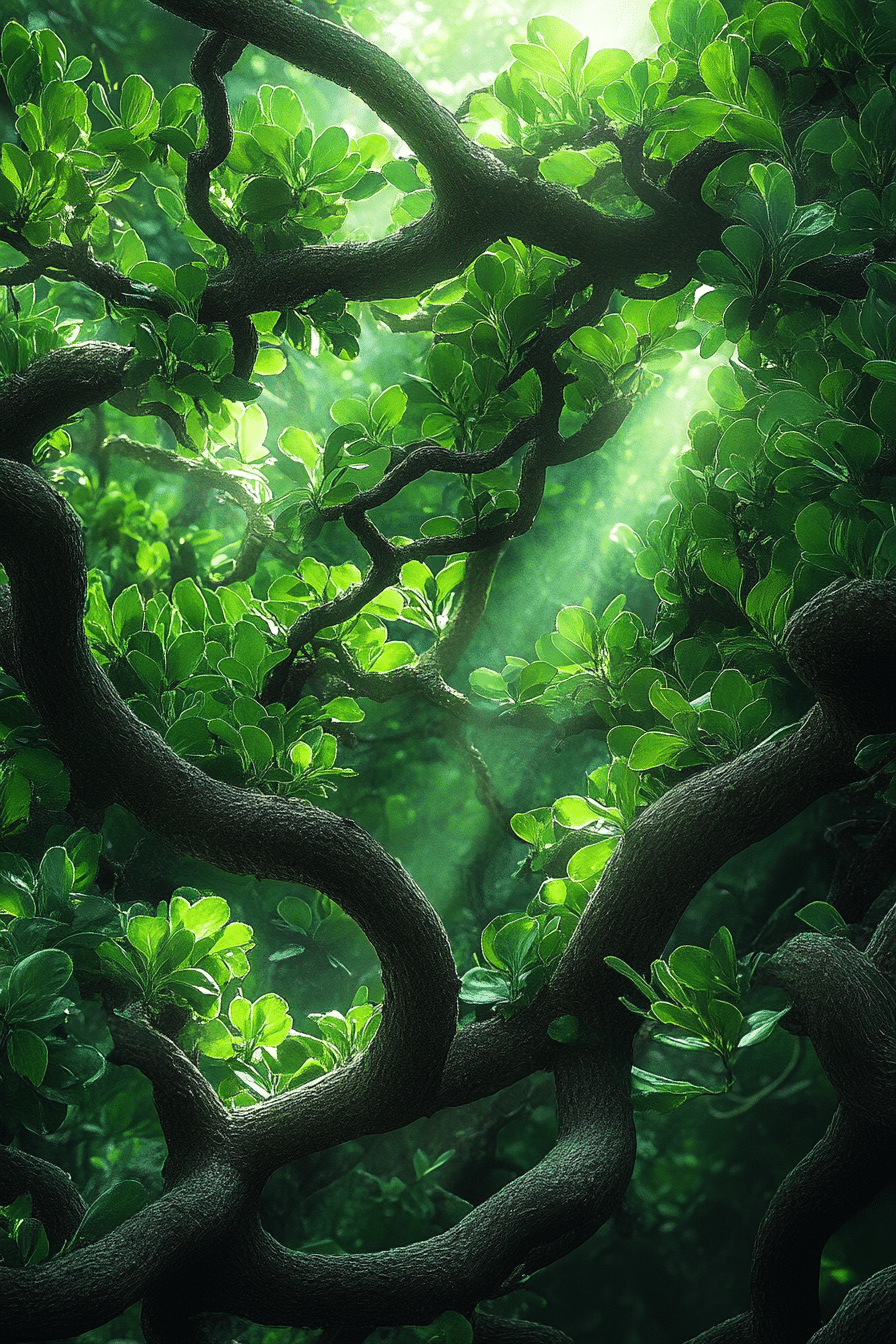
Tangled Abundance in a Wabi Sabi garden embraces the wild beauty of overlapping plants. This design allows greenery to intertwine freely, mimicking the chaos of natural ecosystems. The approach supports biodiversity and creates a lush, thriving space. It’s a celebration of life’s complexity and vibrancy.
22. Muted Elegance
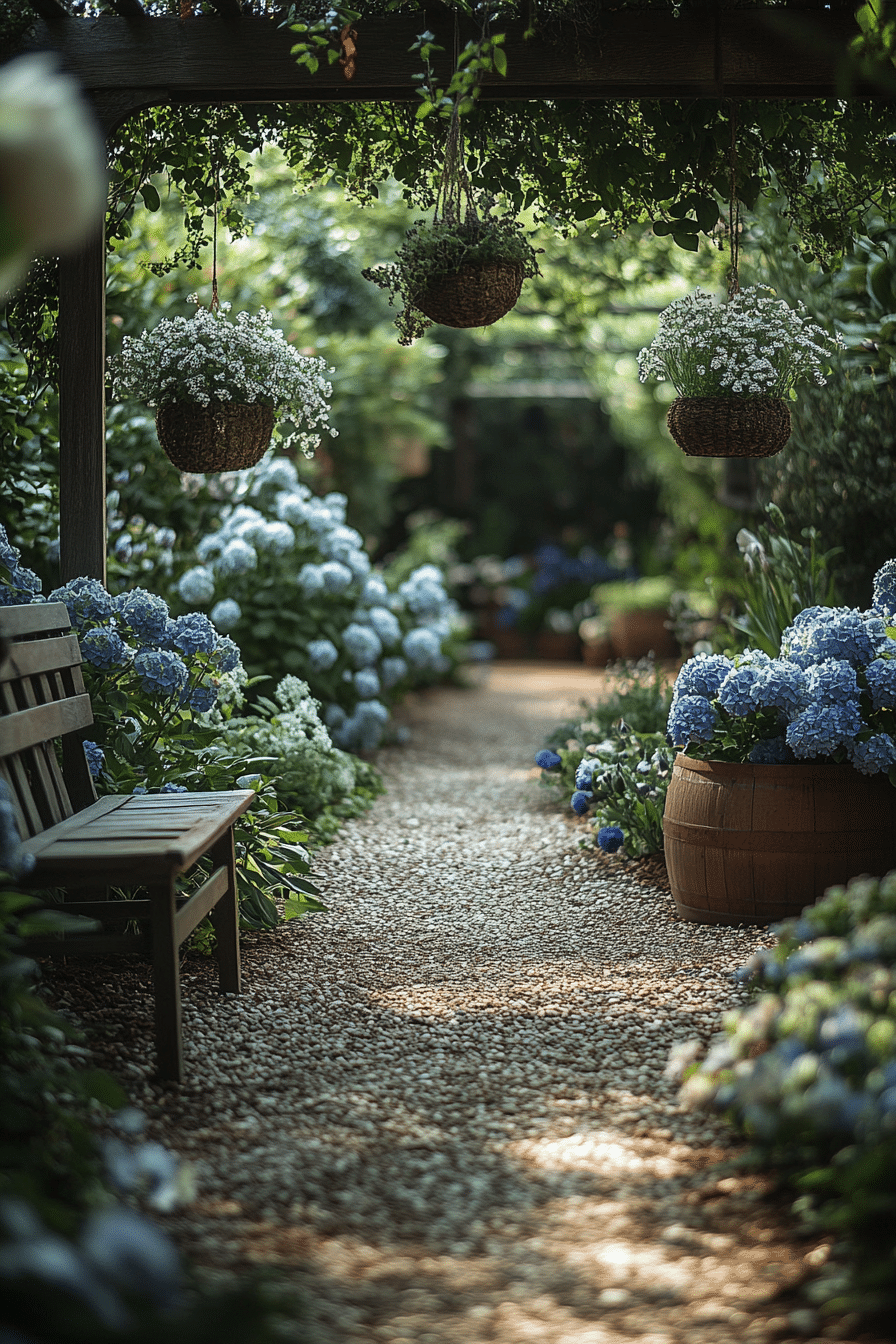
Muted Elegance in a Wabi Sabi garden uses a soft color palette to create a tranquil environment. Plants with gray, blue, and pale yellow tones blend seamlessly with natural elements like stone and wood. This understated design emphasizes harmony and calm over boldness. It’s an ideal choice for those seeking a soothing, minimalist garden.
23. Natural Patchwork
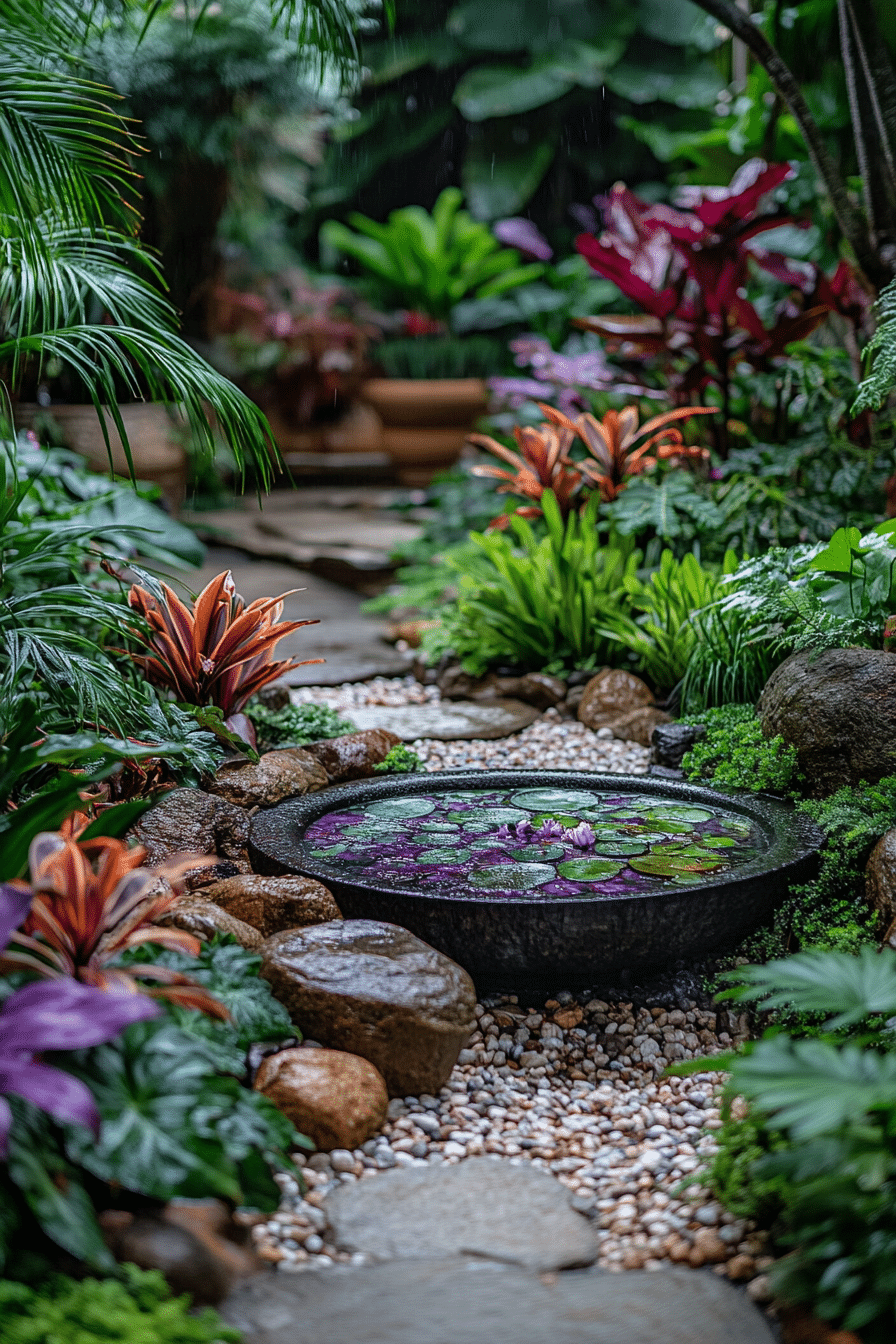
Natural Patchwork in a Wabi Sabi garden combines diverse plant species to create a rich tapestry of textures and colors. This approach mirrors nature’s spontaneous arrangements, resulting in a dynamic, ever-evolving landscape. Each section contributes to the overall harmony of the garden. This design reflects the natural cycles of growth and decay.
24. Earthbound Bliss
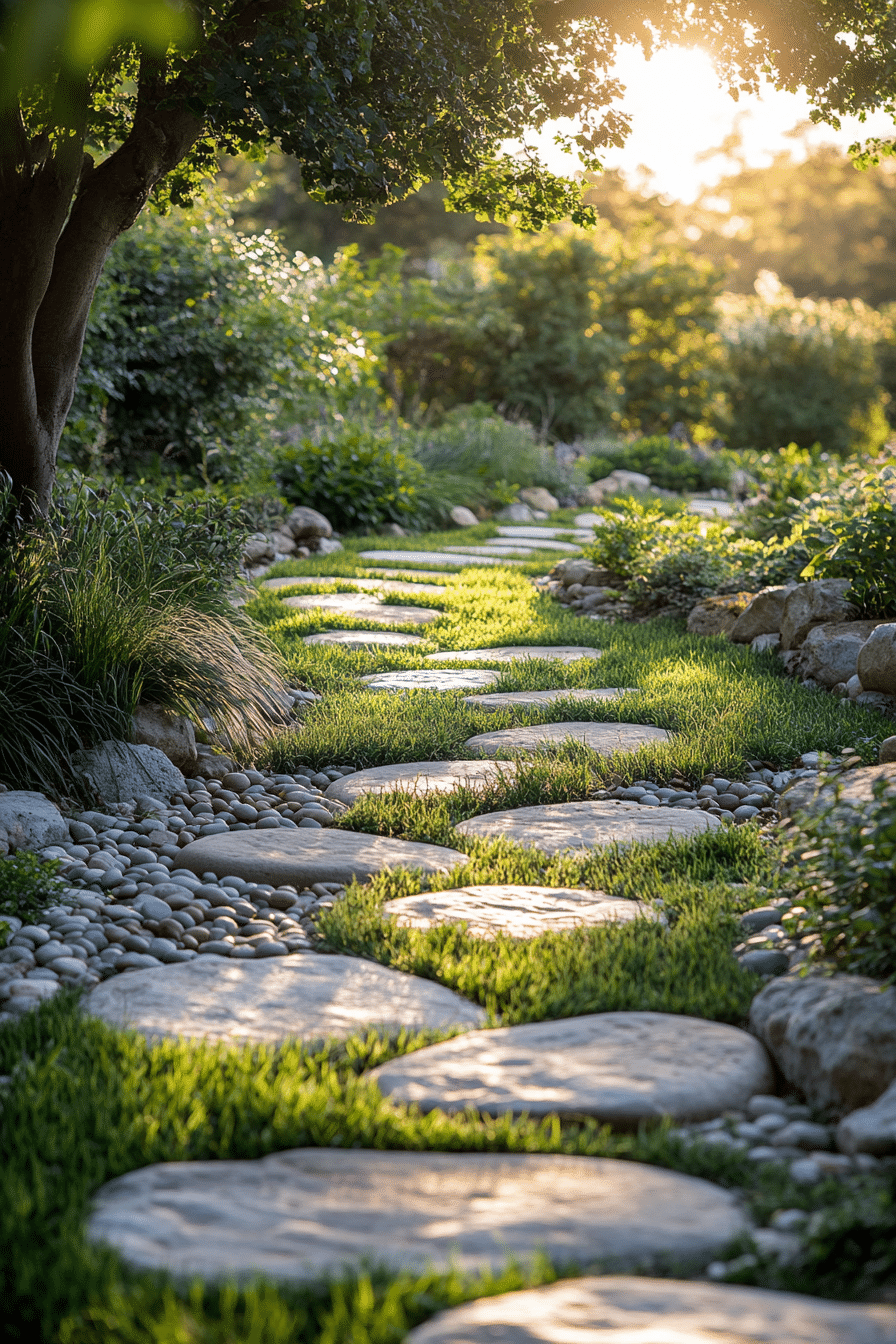
Earthbound Bliss in a Wabi Sabi garden offers a sensory connection to nature with soft grasses and smooth pathways. Walking barefoot through this garden encourages mindfulness and grounding. The design focuses on tactile elements that bring comfort and calm. It’s a nurturing space that invites a deeper relationship with the earth.
25. Soft Borders
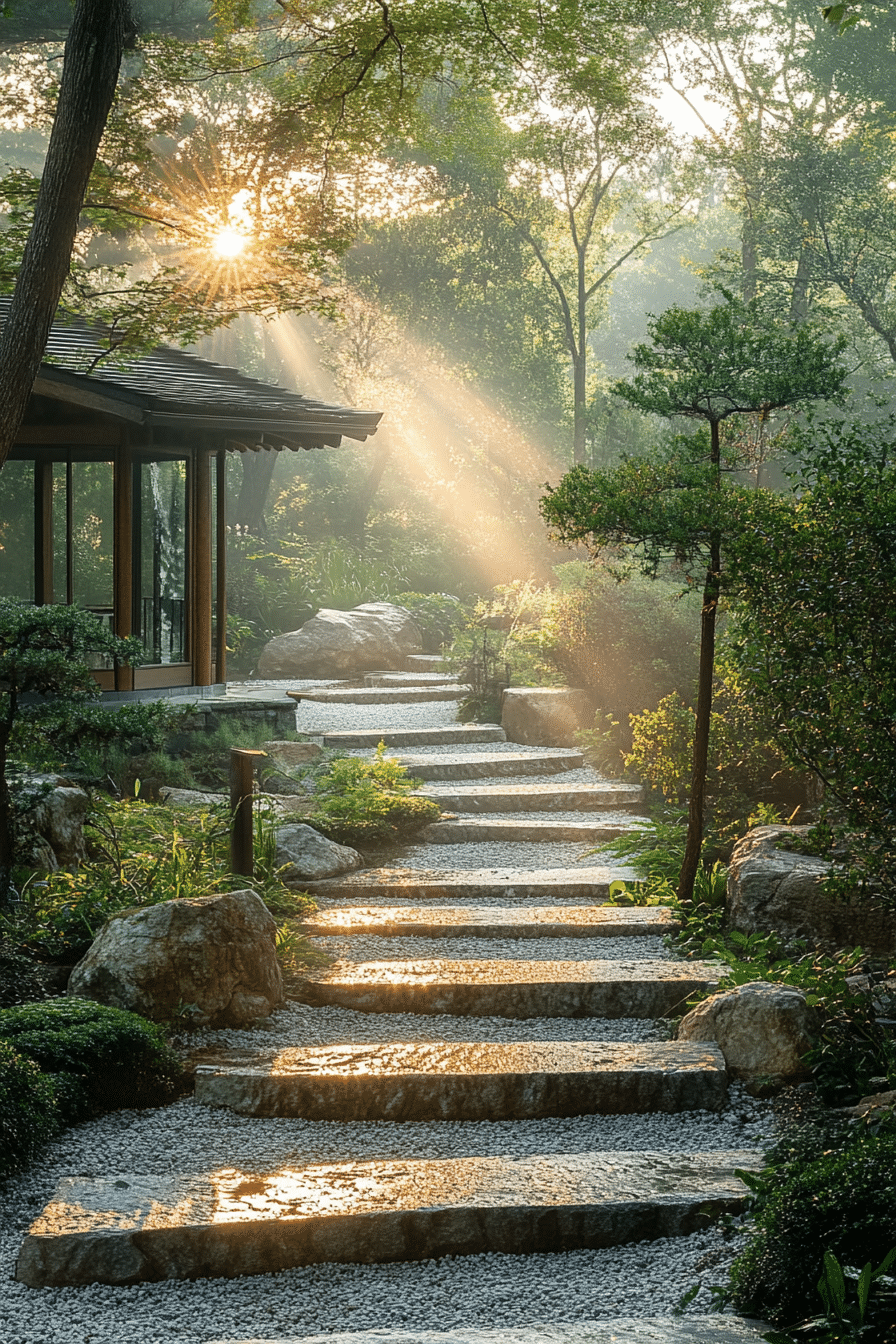
Soft Borders in a Wabi Sabi garden use plants that spill gently over pathways and edges. This creates a seamless transition between garden areas and the surrounding landscape. The design avoids sharp separations, instead embracing an organic, flowing aesthetic. This approach enhances the garden’s natural charm and spaciousness.
26. Dancing Winds
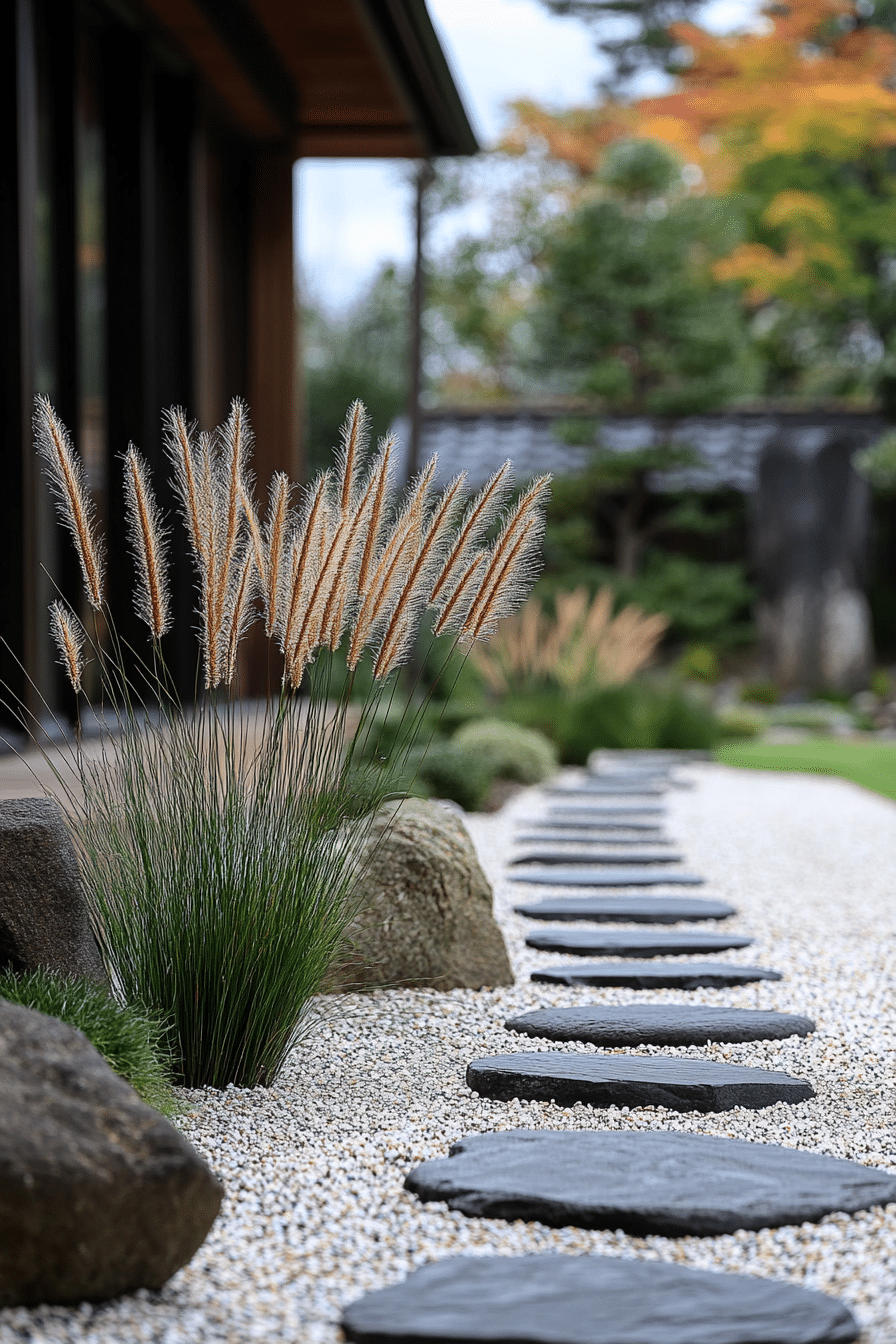
Dancing Winds in a Wabi Sabi garden incorporates elements that respond to the breeze, such as tall grasses and delicate wind chimes. The movement and sound create an ever-changing, sensory-rich environment. This garden celebrates the transient and intangible, reflecting the Wabi Sabi appreciation for nature’s rhythms.
27. Shaded Simplicity
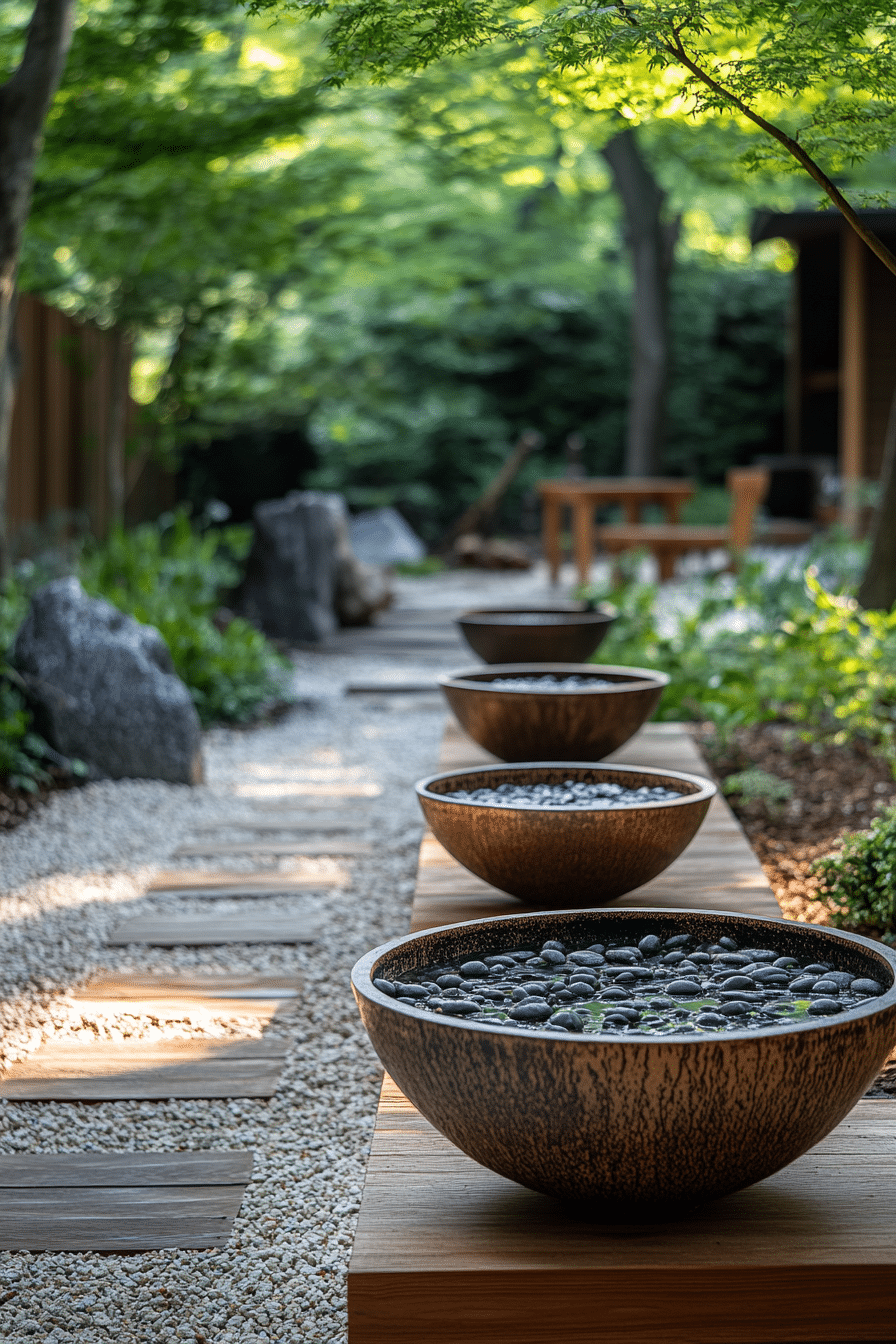
Shaded Simplicity in a Wabi Sabi garden focuses on creating serene nooks under leafy canopies. Shade-loving plants, simple seating, and natural materials define these quiet retreats. Each element is chosen for its understated beauty, encouraging reflection and rest. This design creates a sanctuary from the sun and the busyness of life.
28. Weathered Beauty
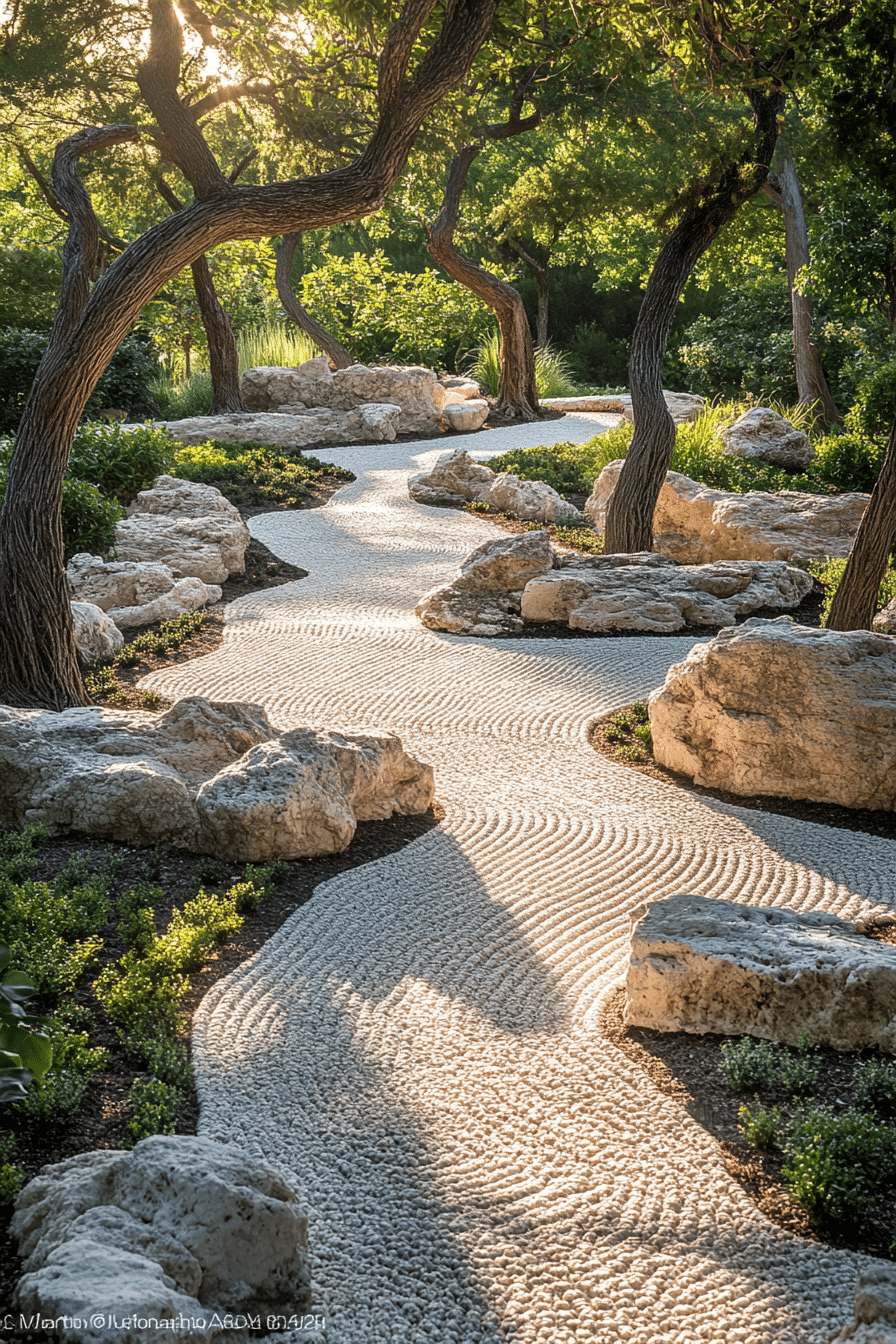
Weathered Beauty in a Wabi Sabi garden highlights the marks left by time and the elements. Rain-streaked stones, sun-faded wood, and moss-covered surfaces tell a story of resilience and adaptation. This design embraces the evolving character of natural materials. It’s a space that feels alive, growing more beautiful with each passing season.
29. Tranquil Canopy
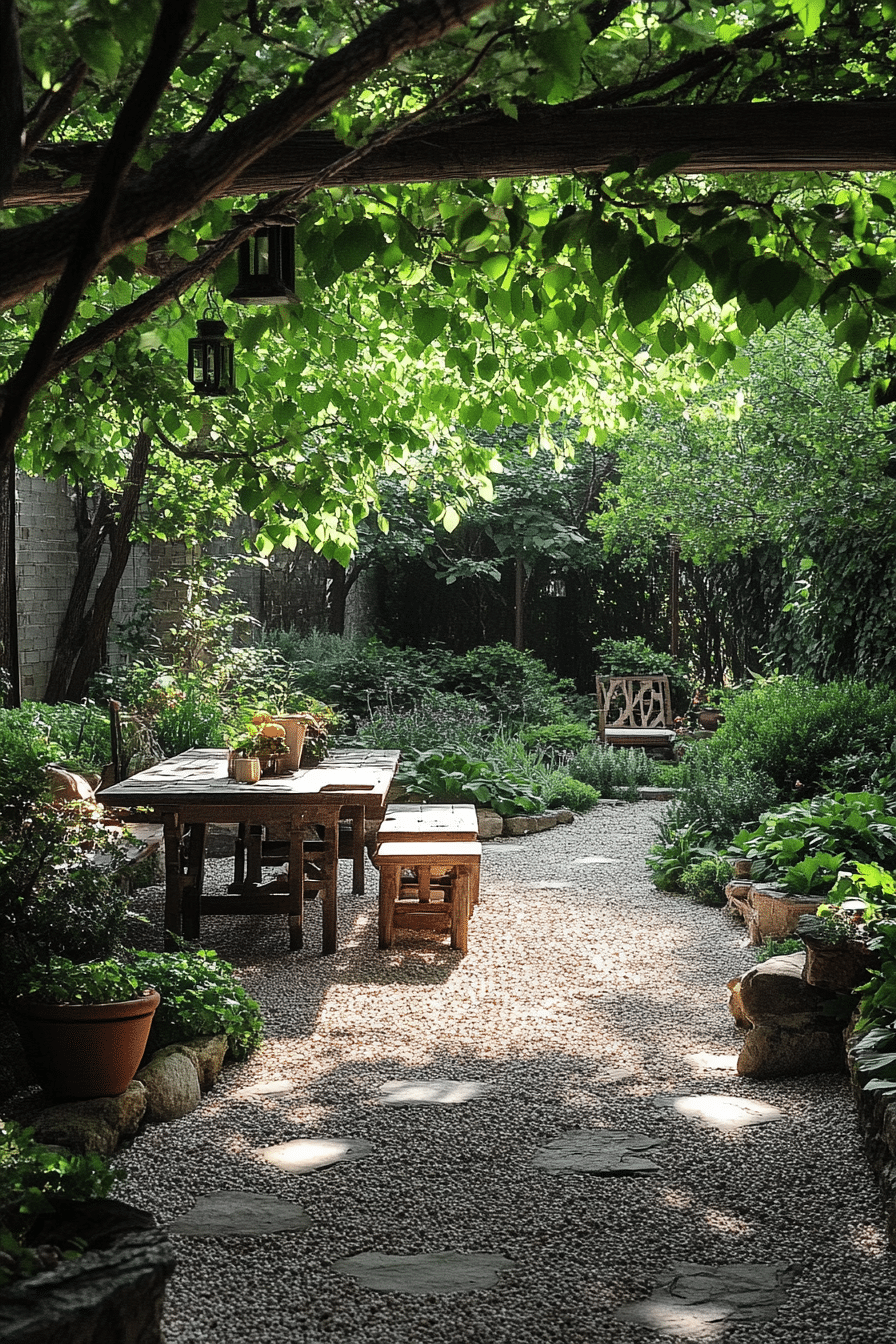
Tranquil Canopy in a Wabi Sabi garden creates a peaceful shelter using tall trees and leafy crowns. The natural roof filters sunlight, providing shade and a sense of enclosure. This design emphasizes the imperfections of nature, such as uneven growth and varied leaf shapes, to create a soothing atmosphere. It’s an ideal space for relaxation and meditation.
Conclusion
These 29 Wabi Sabi garden ideas offer a thoughtful approach to outdoor design, emphasizing the beauty of imperfection, natural elements, and serene simplicity. By incorporating weathered textures, asymmetrical layouts, and organic materials, you can create a Wabi Sabi garden that reflects harmony and authenticity. Whether it’s a quiet corner for meditation or a lush space for contemplation, these ideas inspire you to embrace nature’s imperfections and find beauty in the understated. Let your garden become a tranquil retreat where timeless design meets the natural world.

